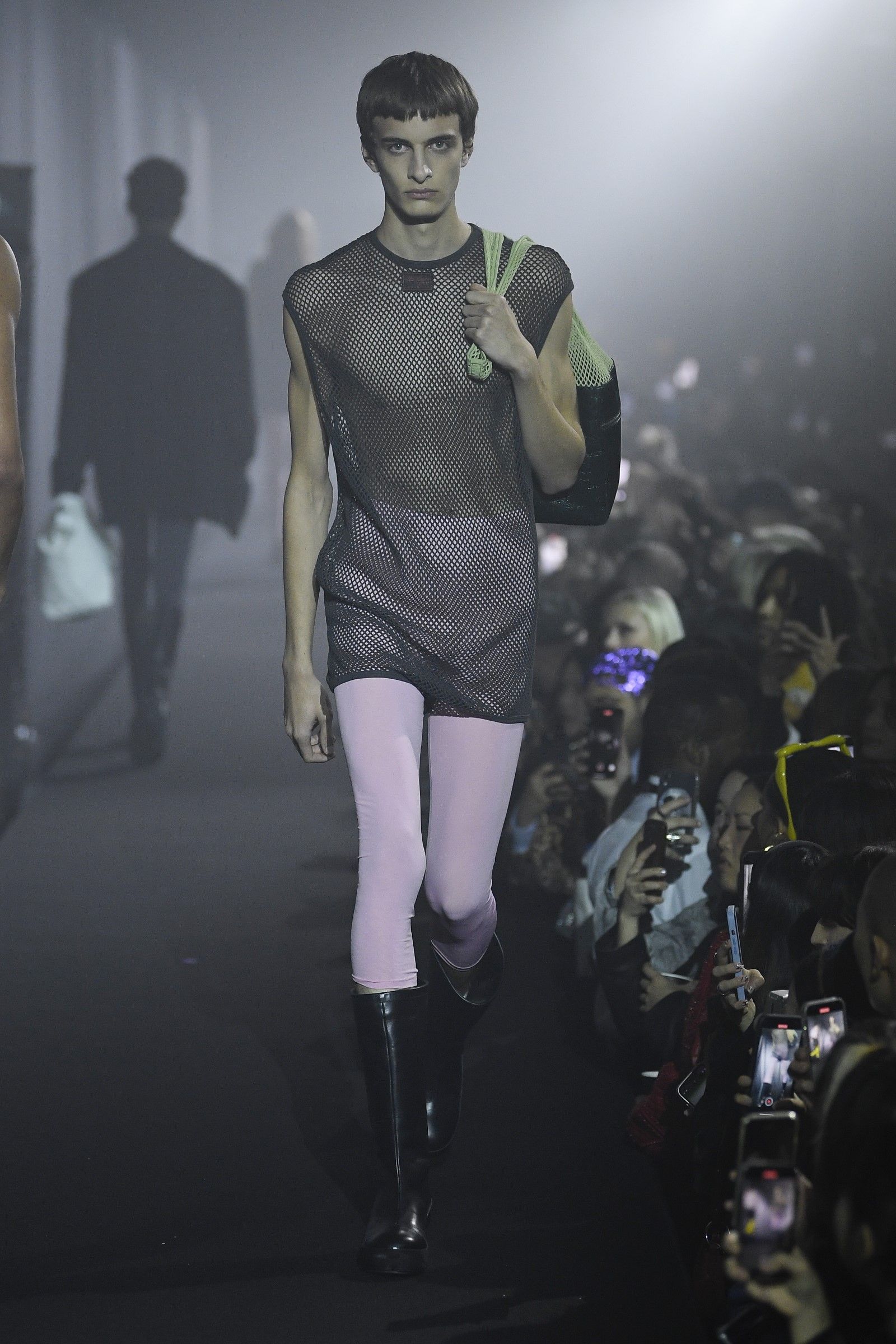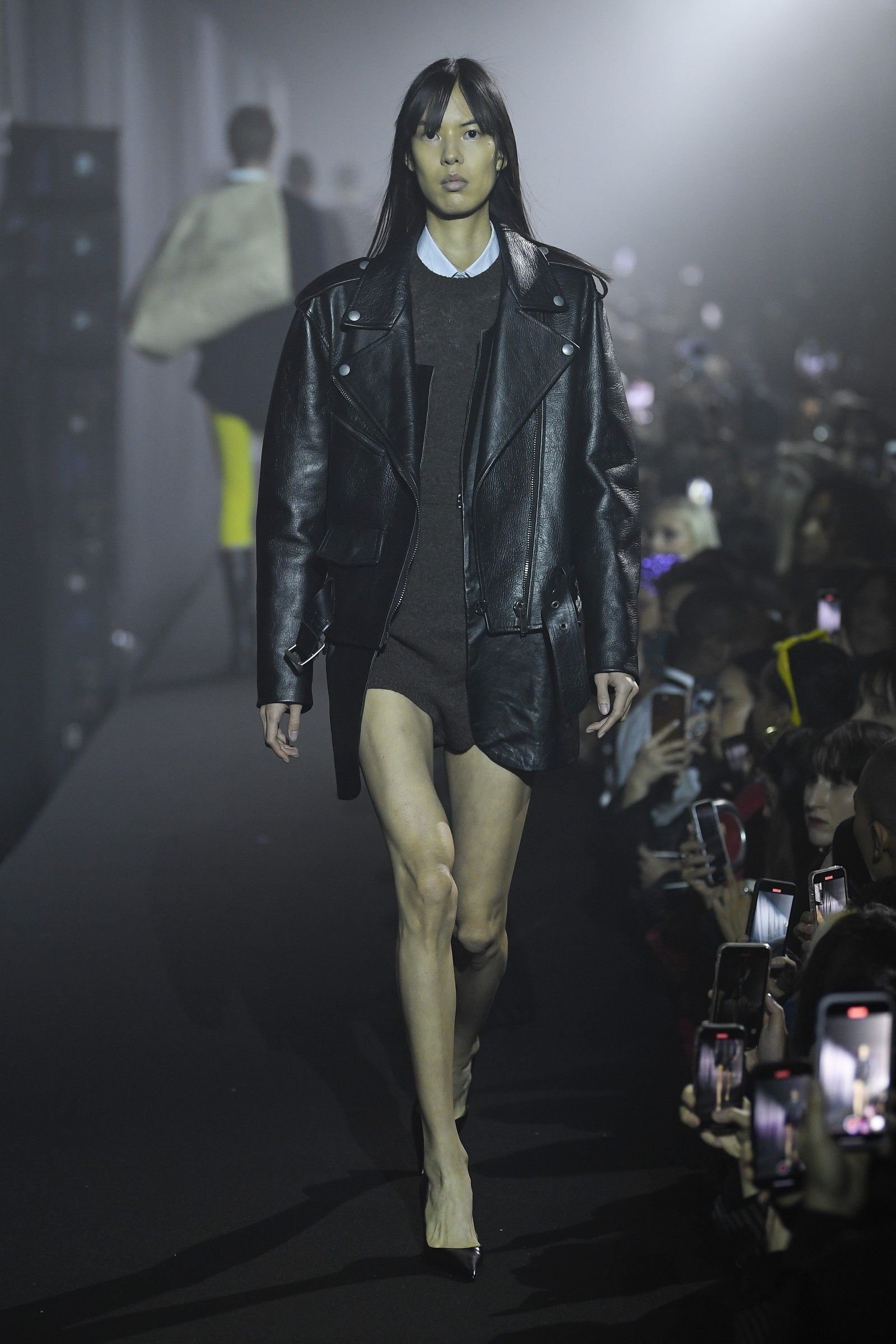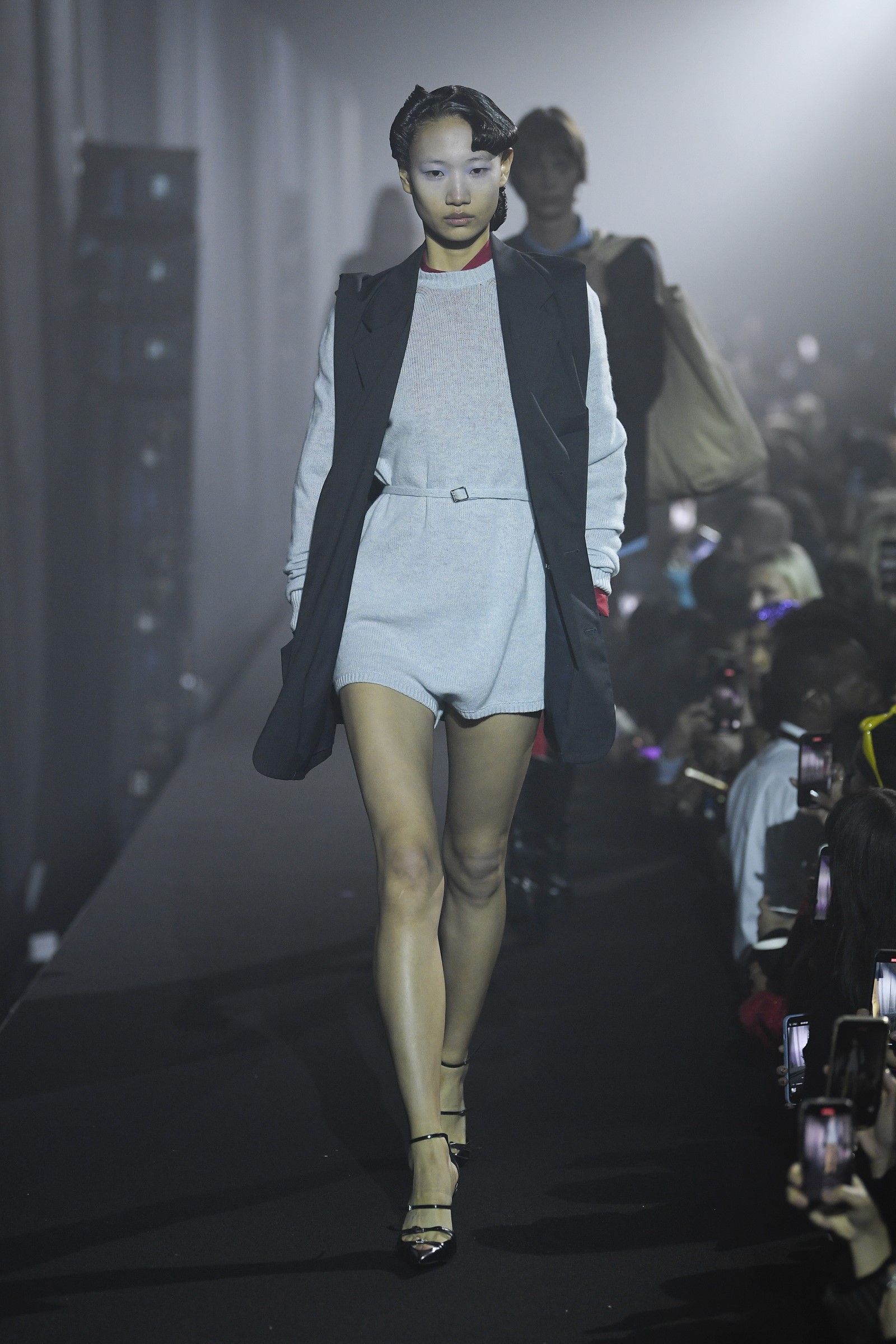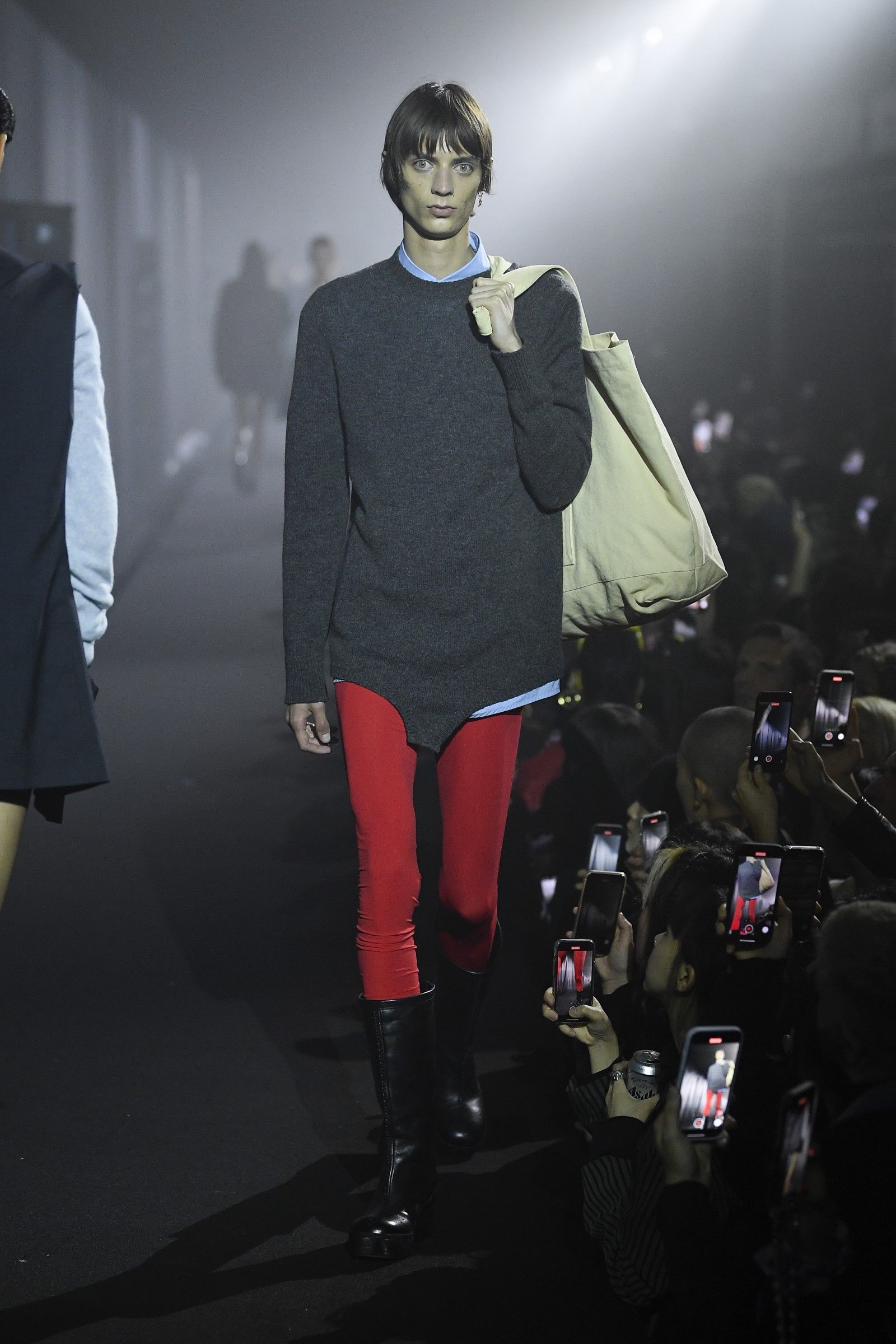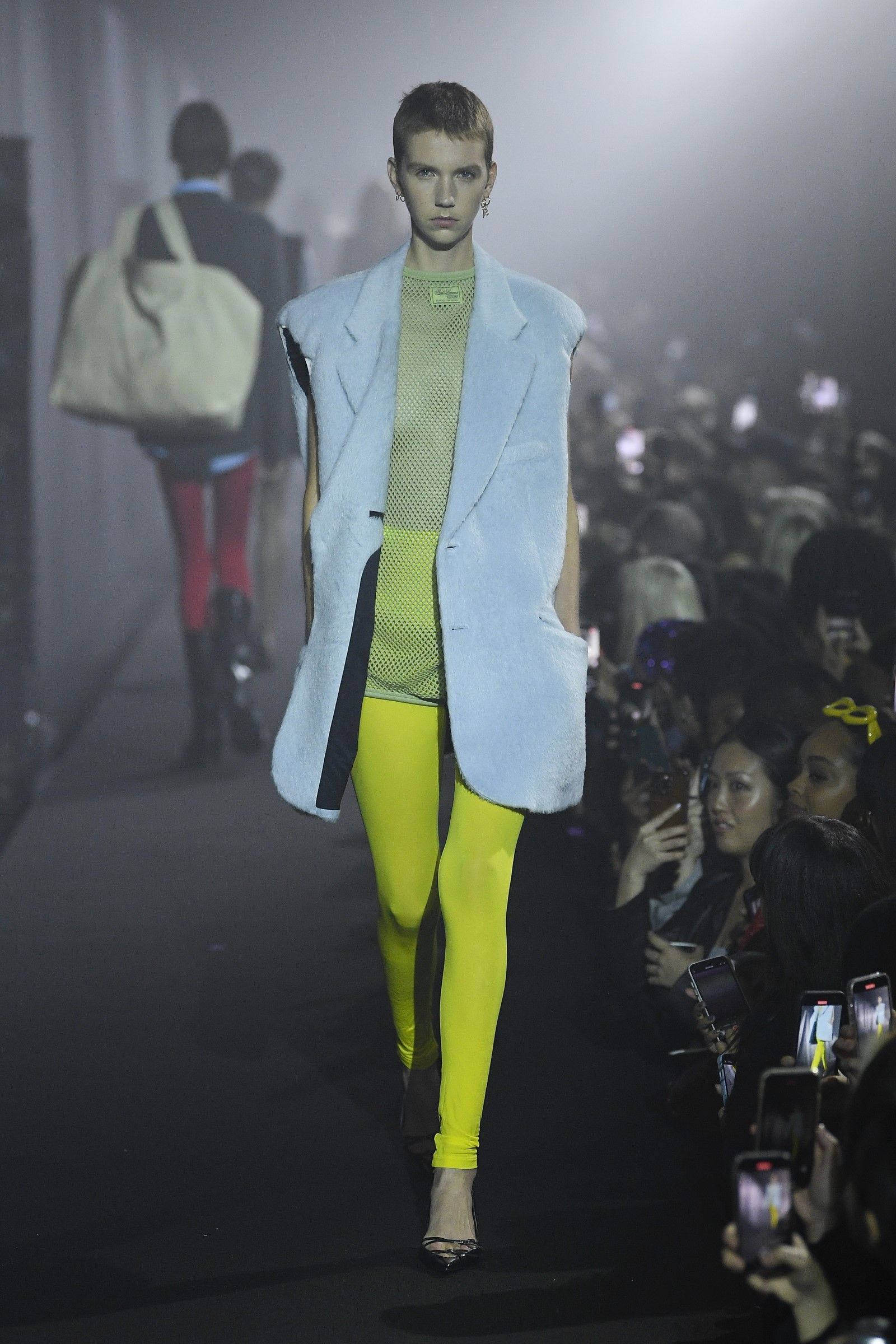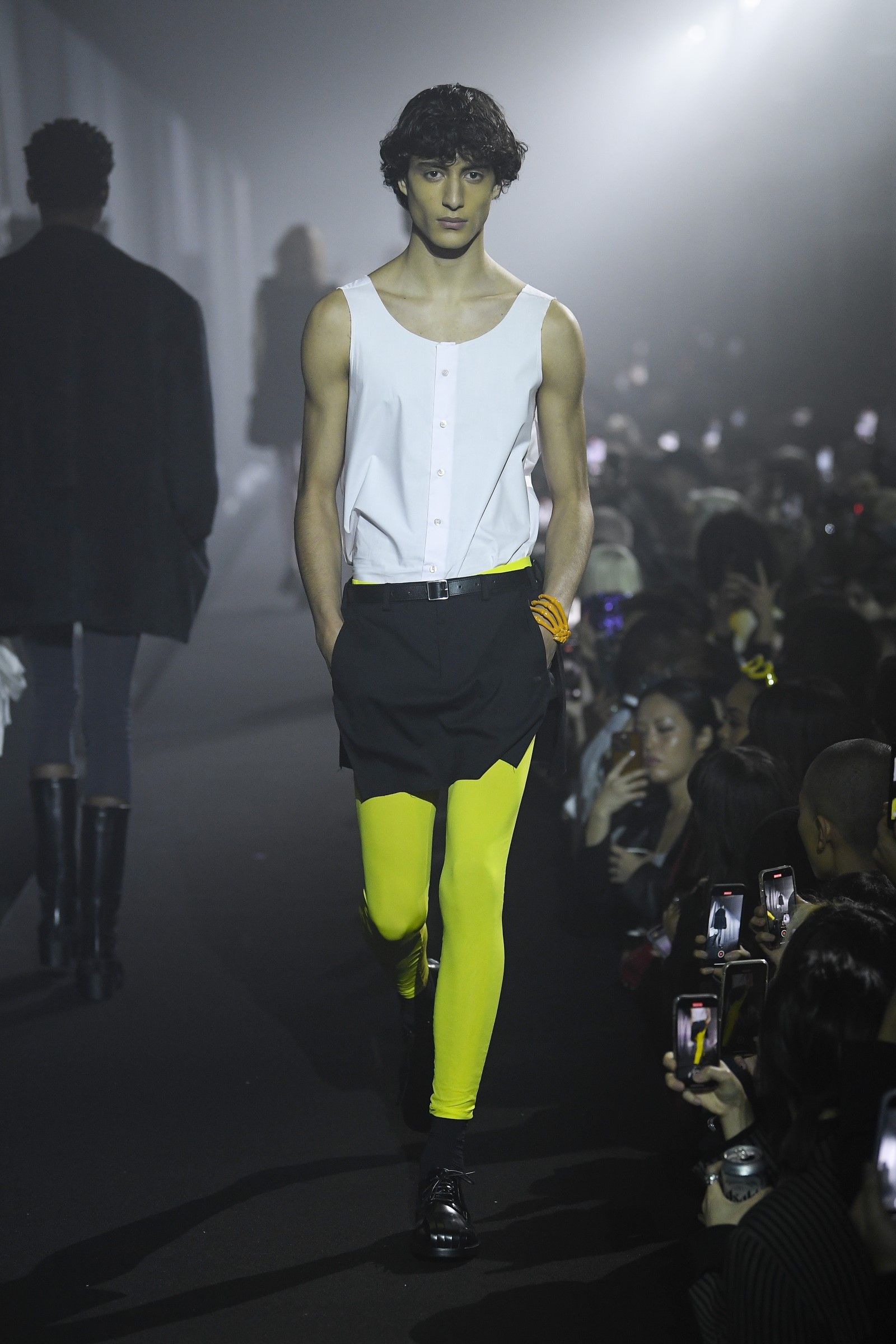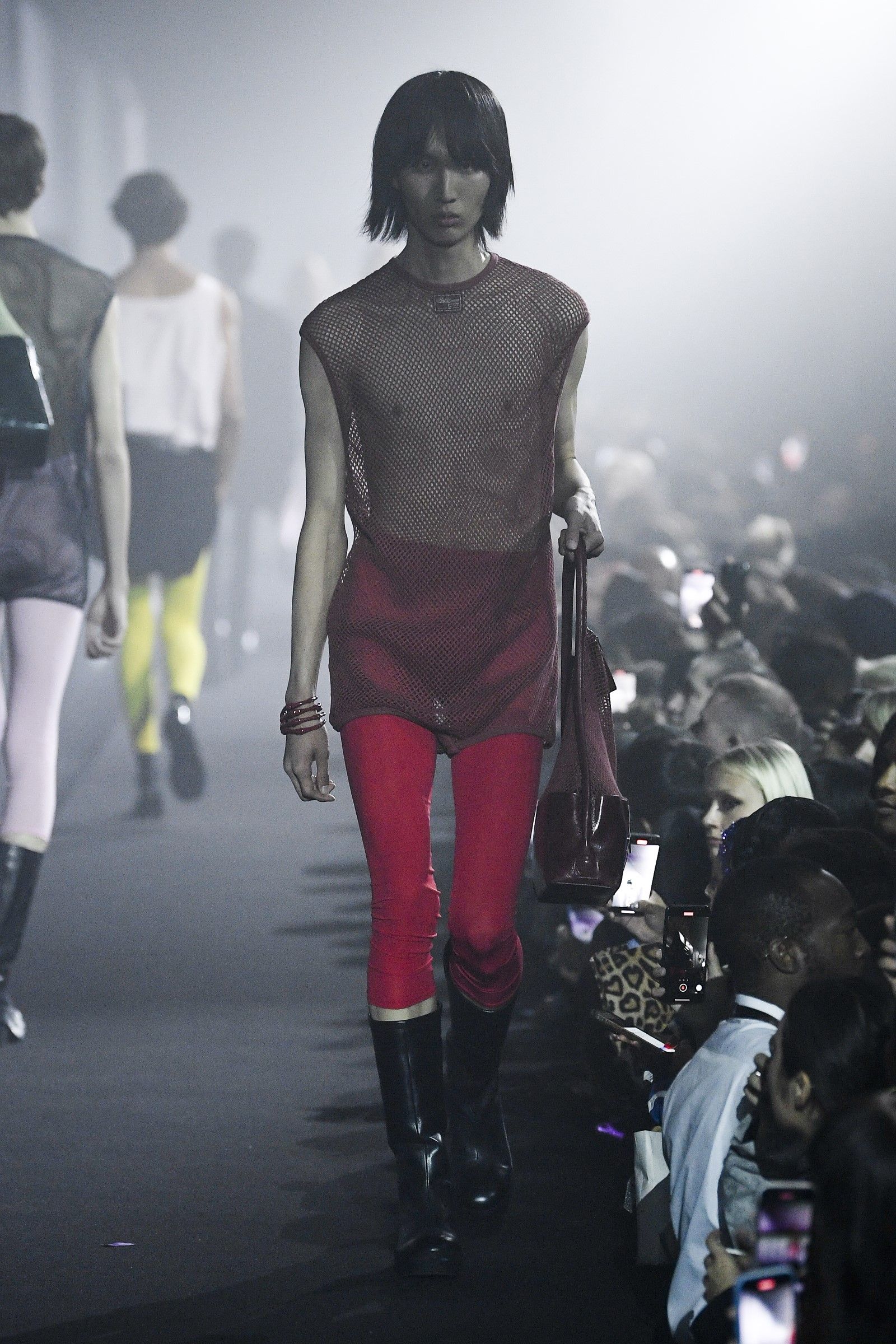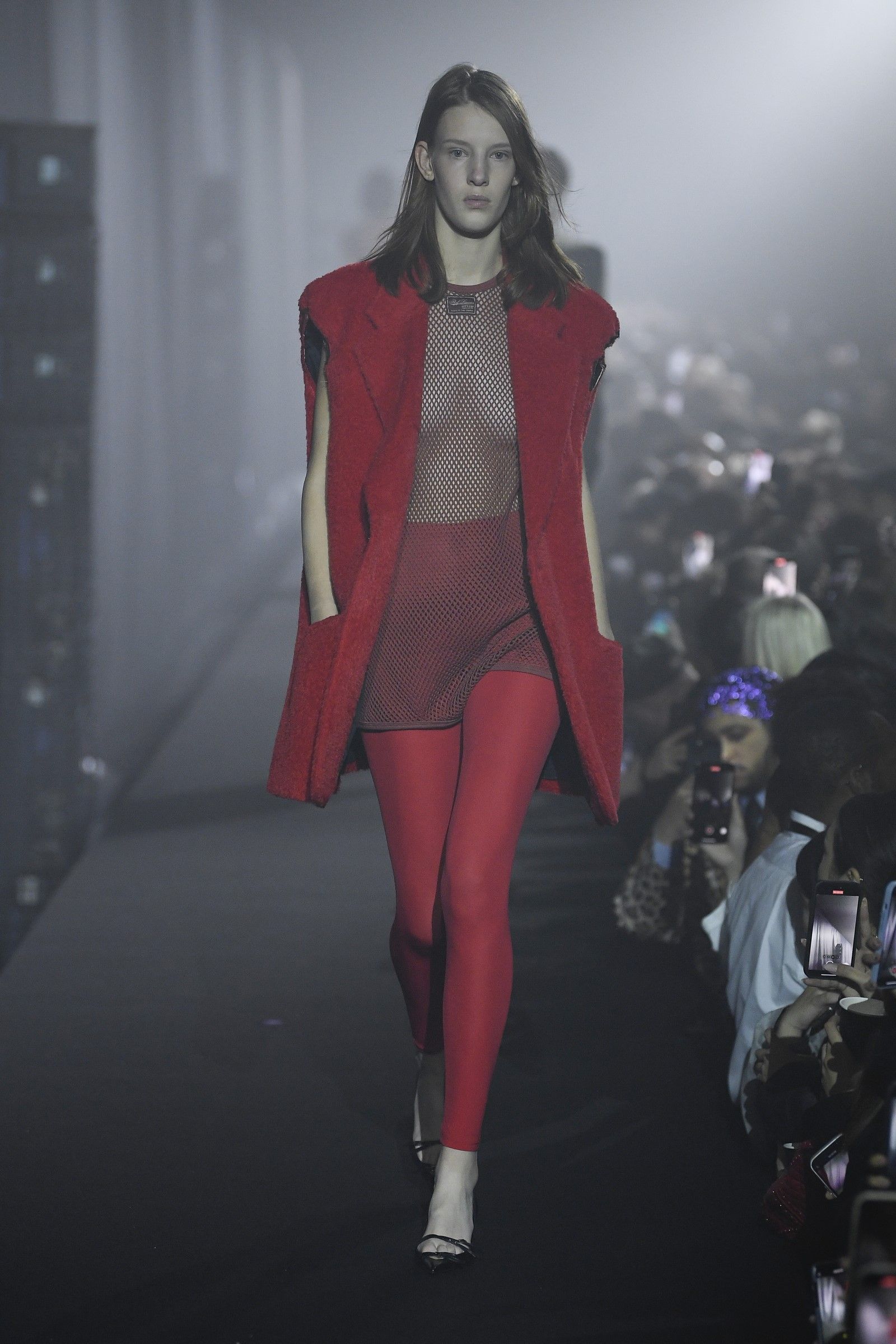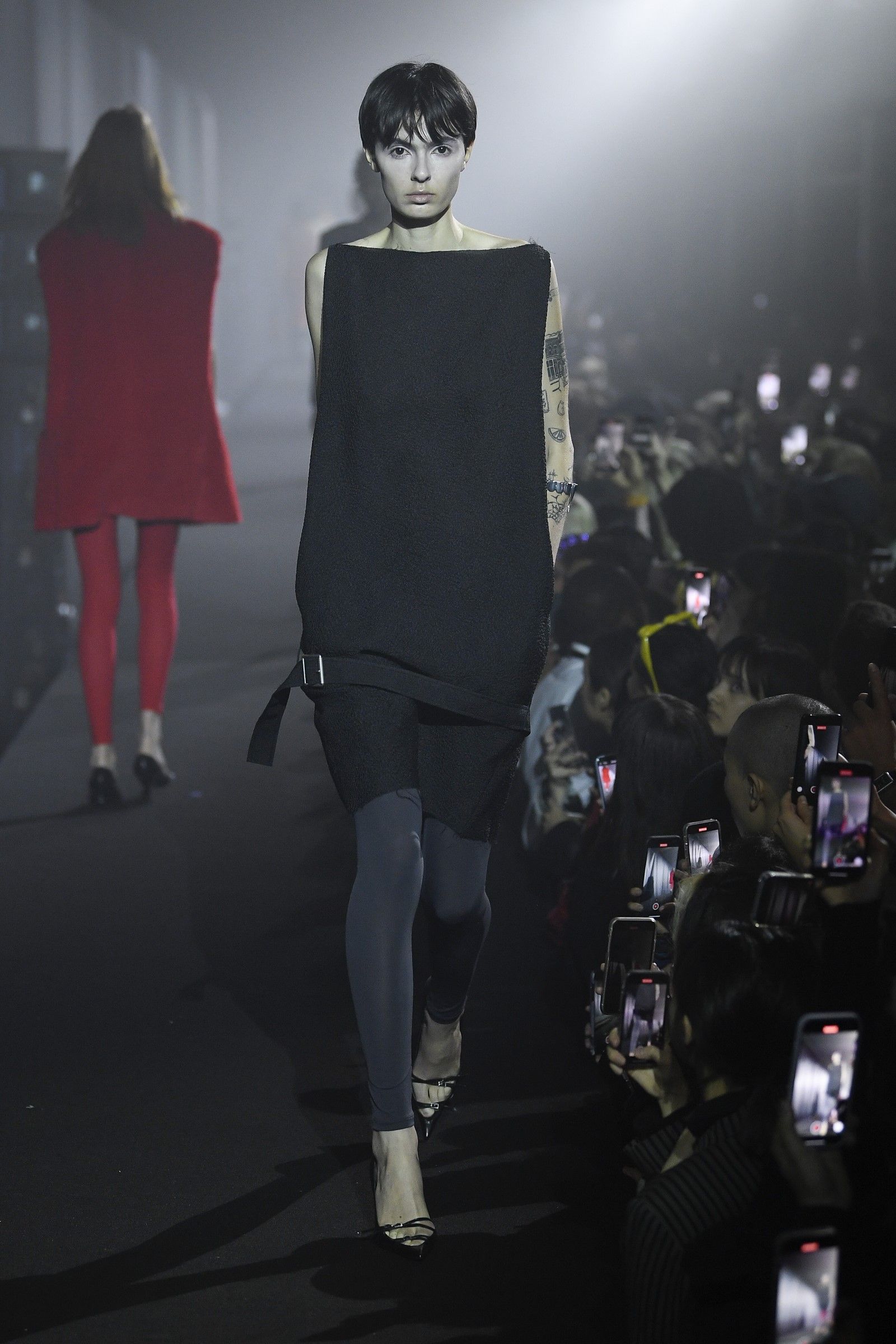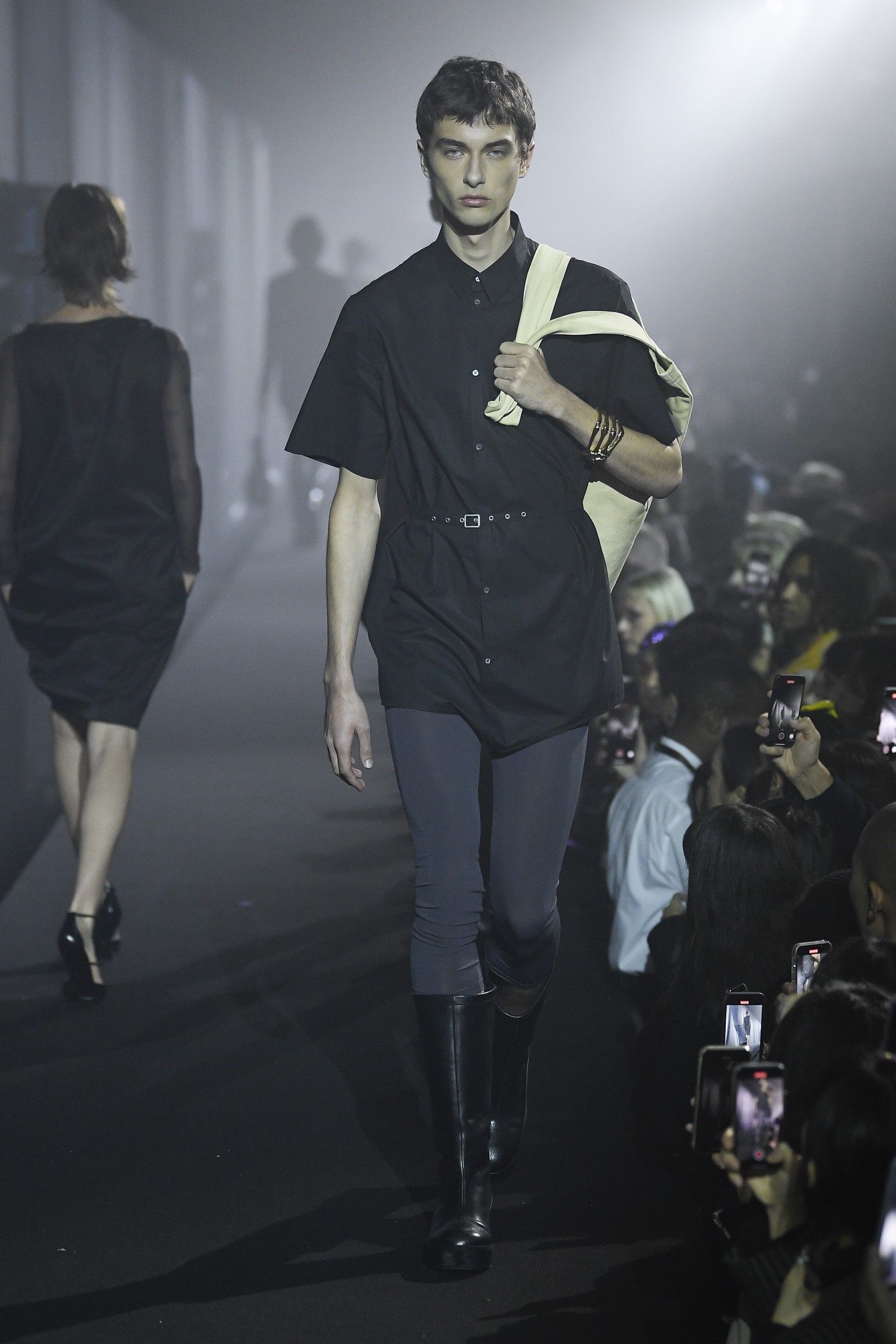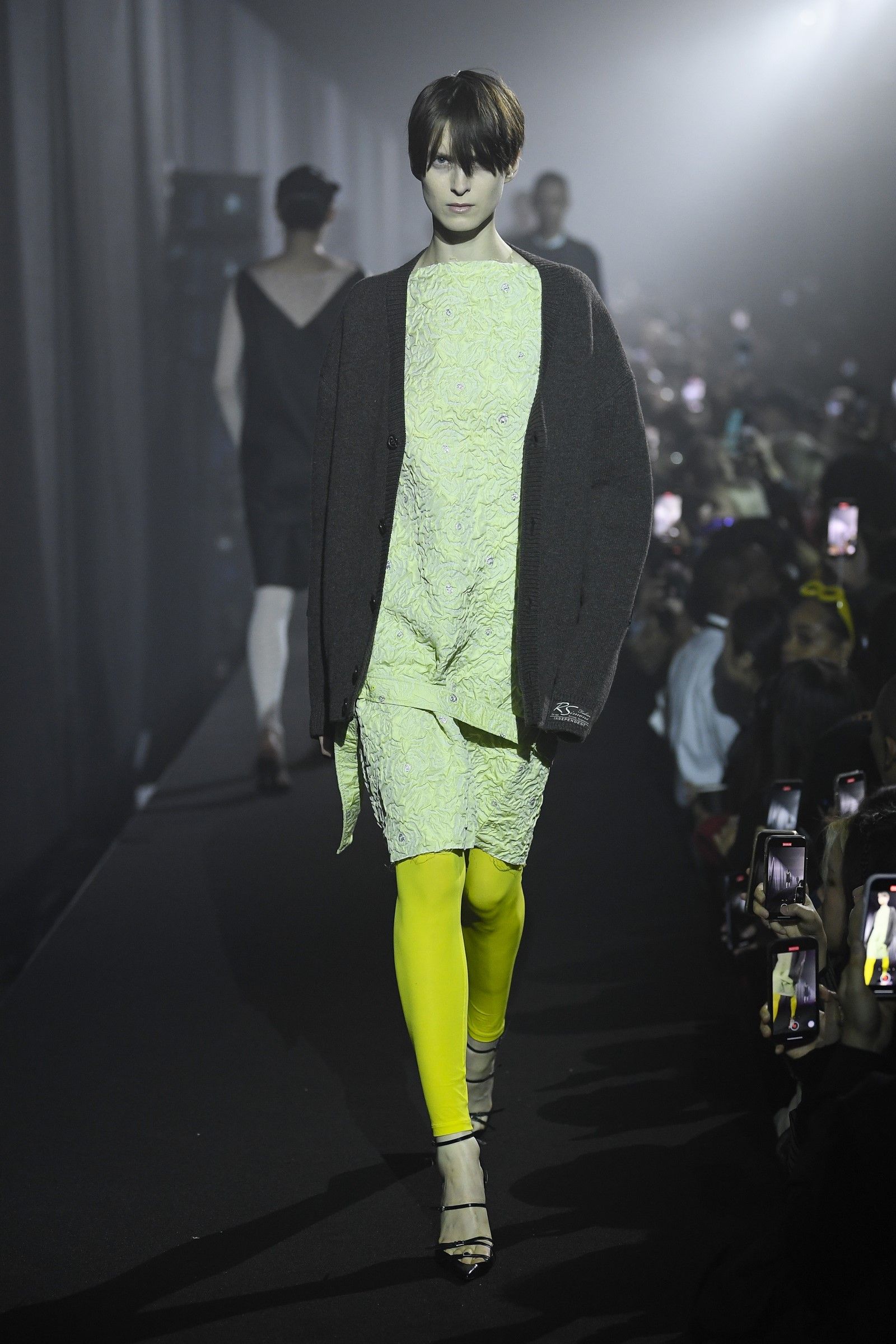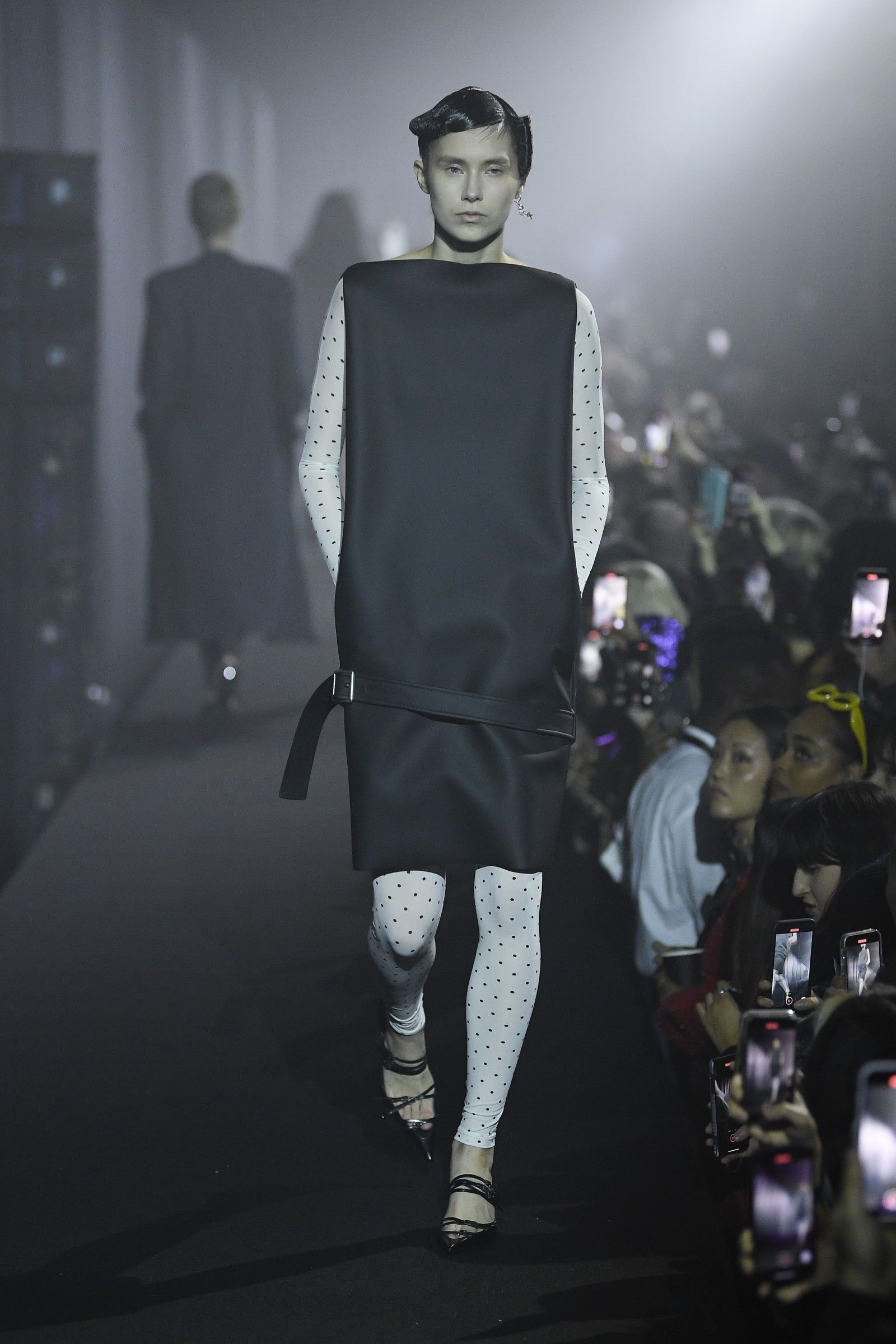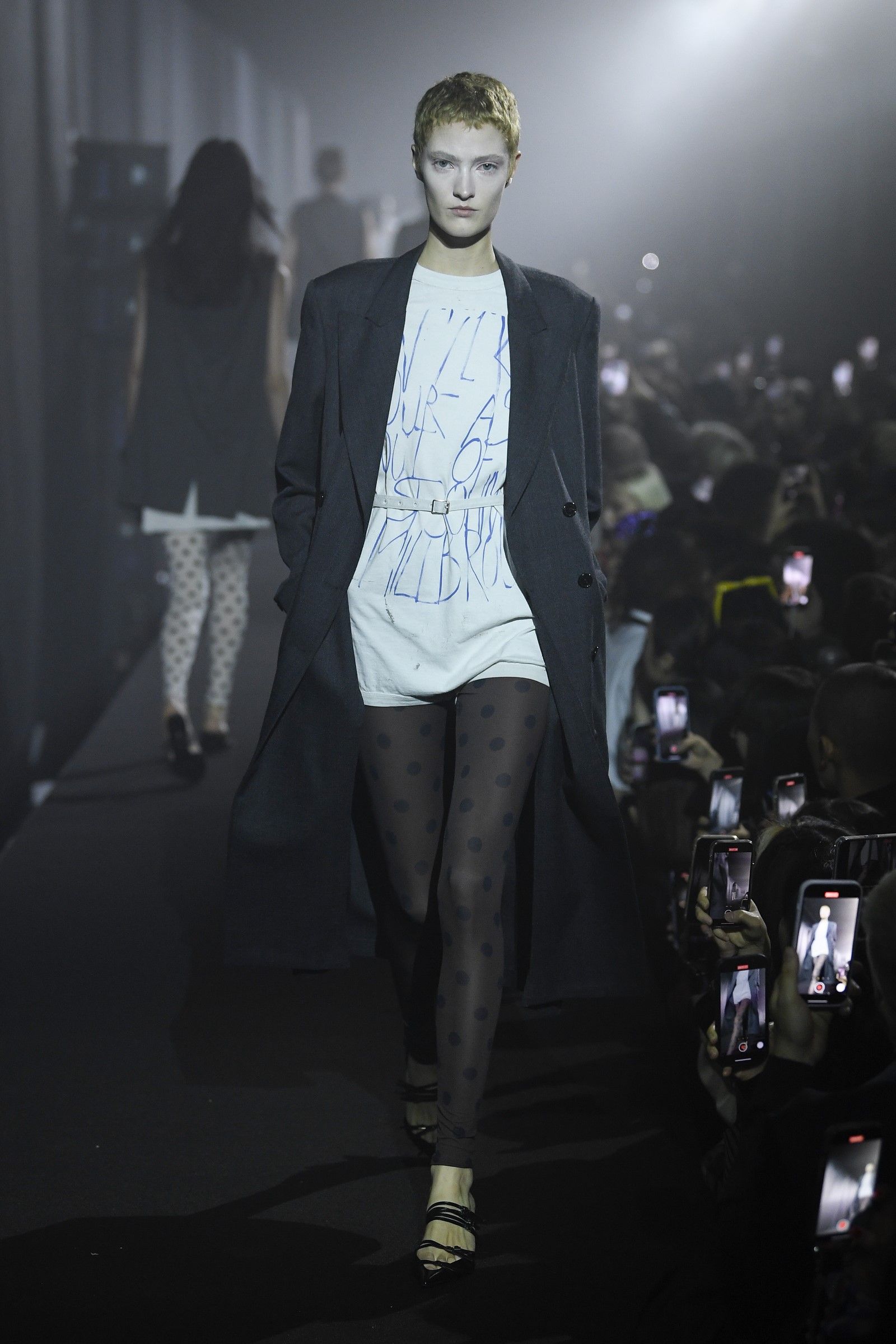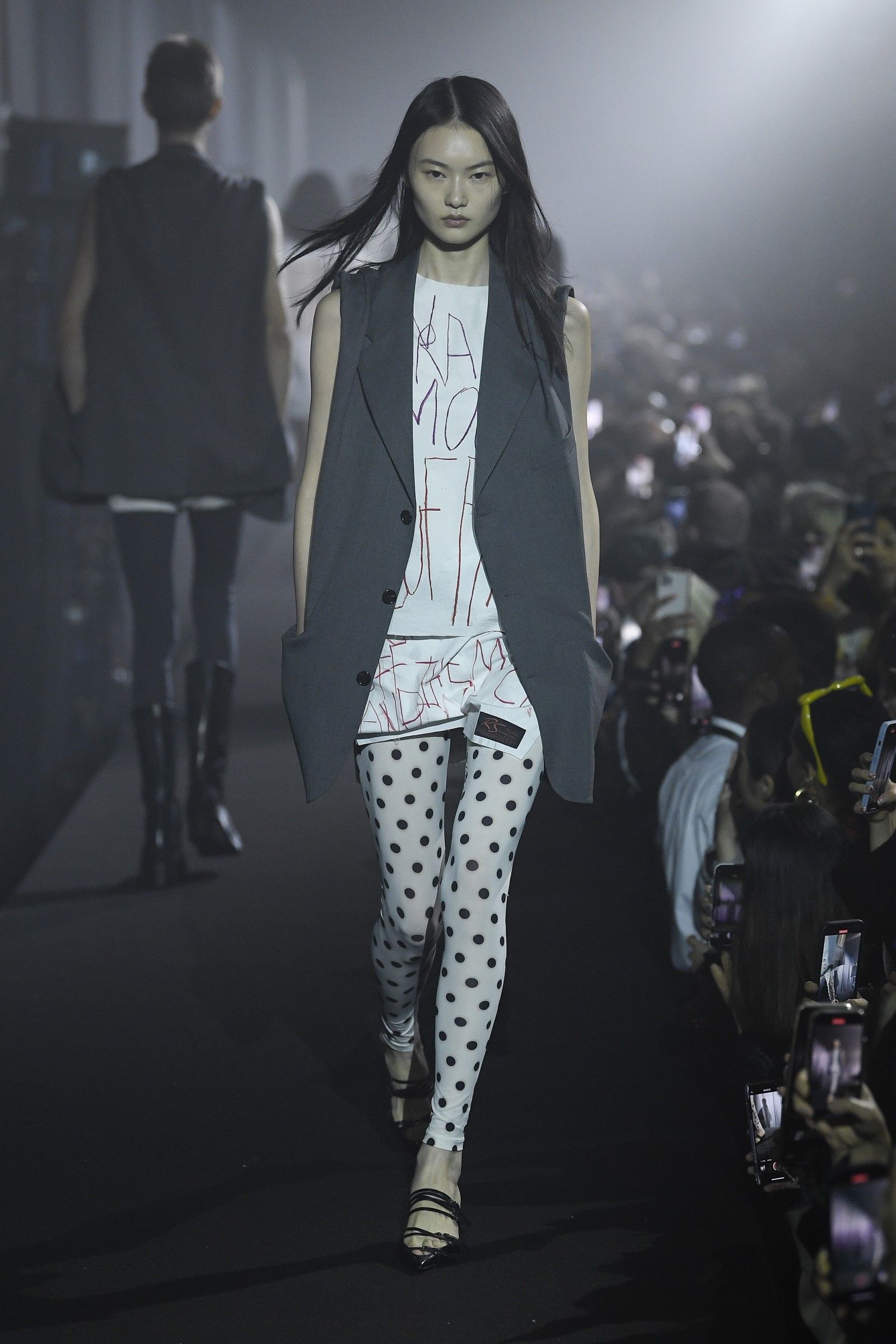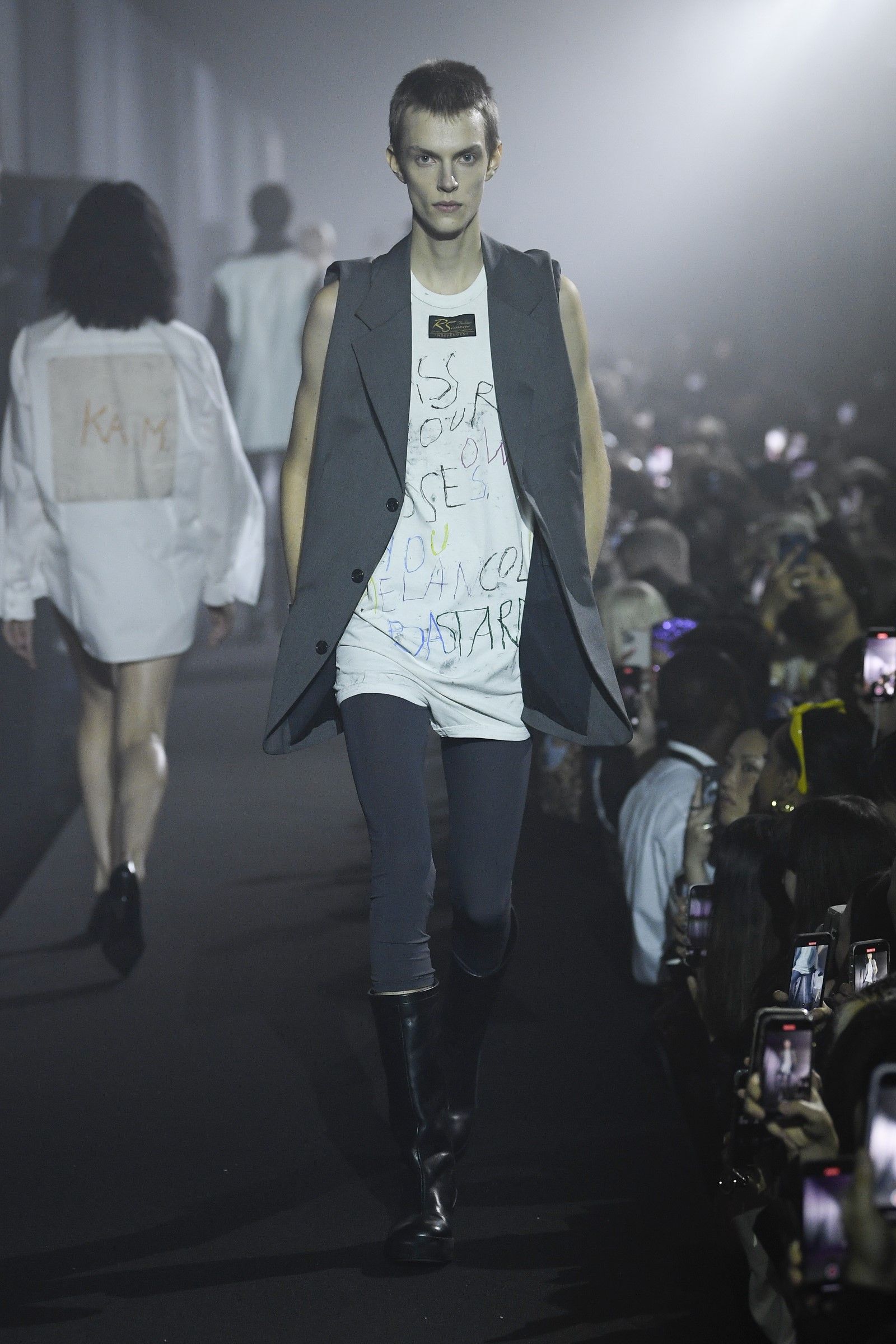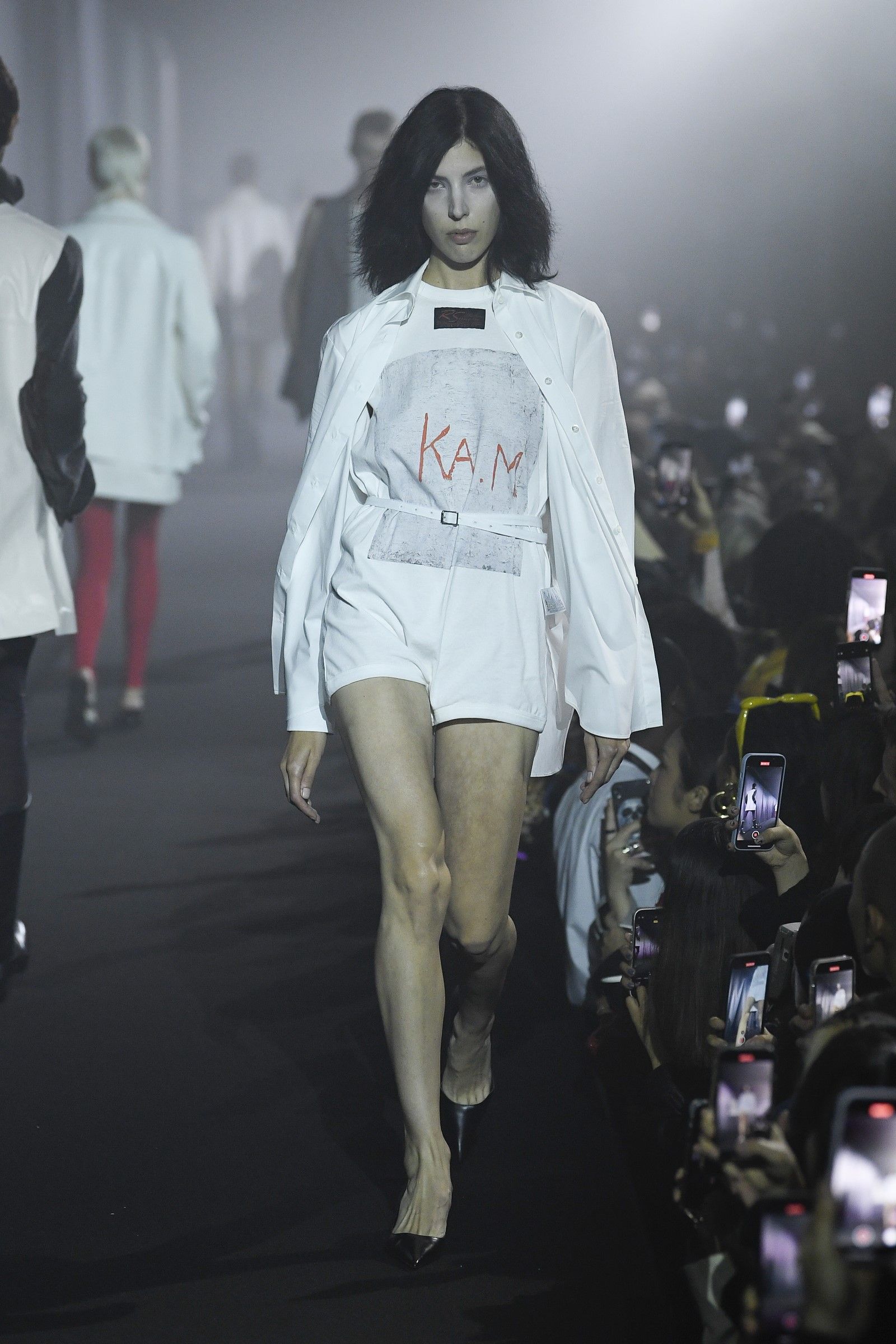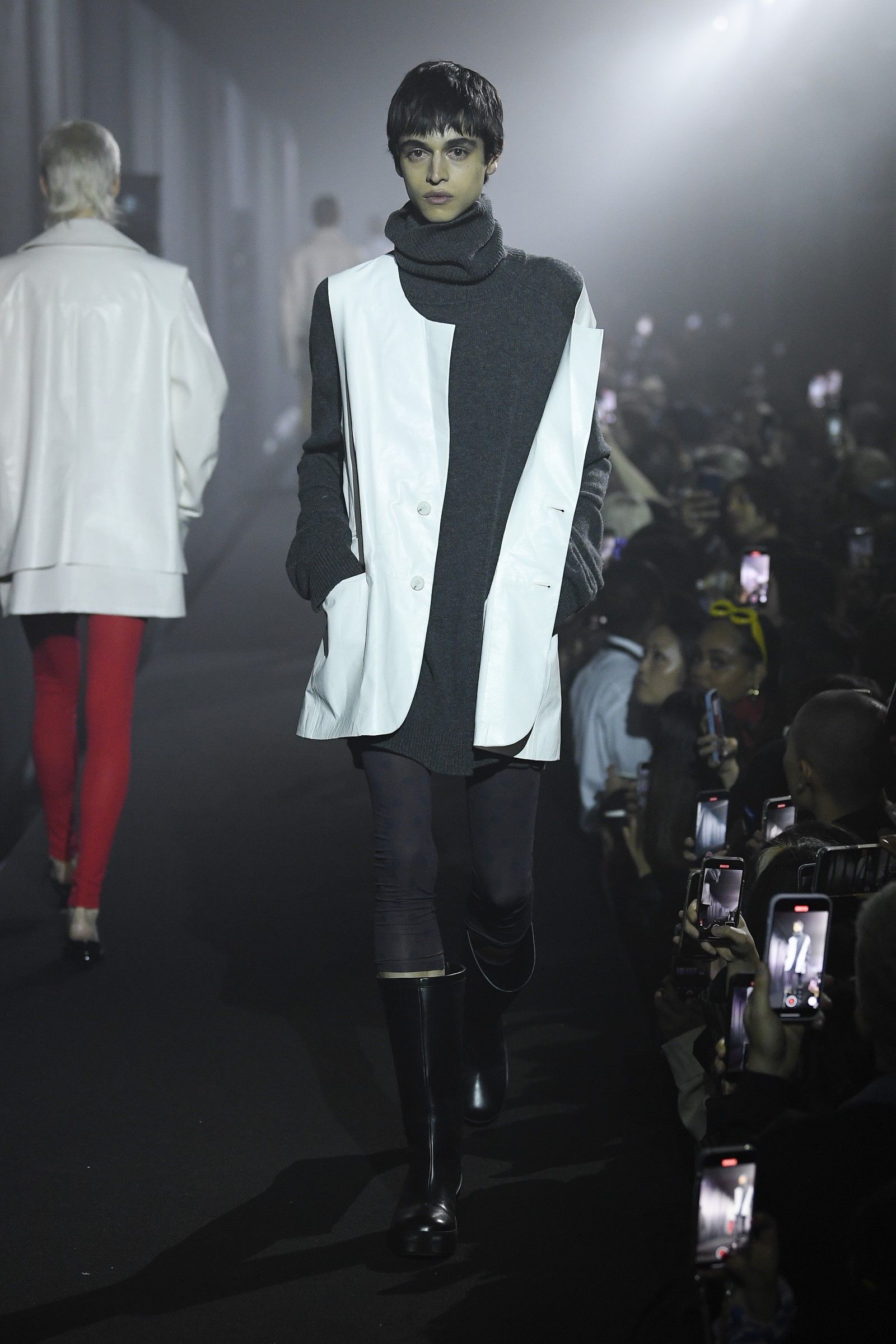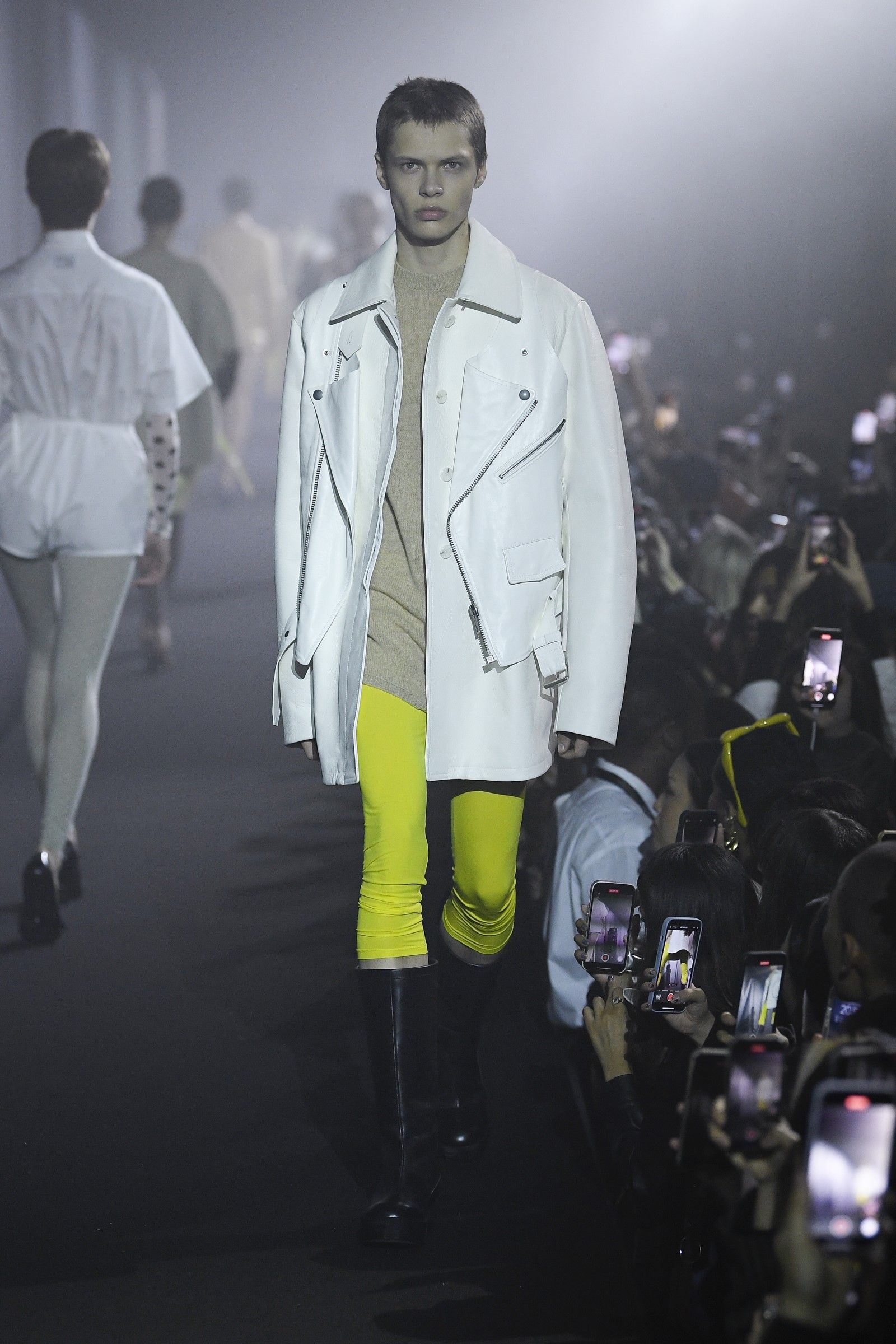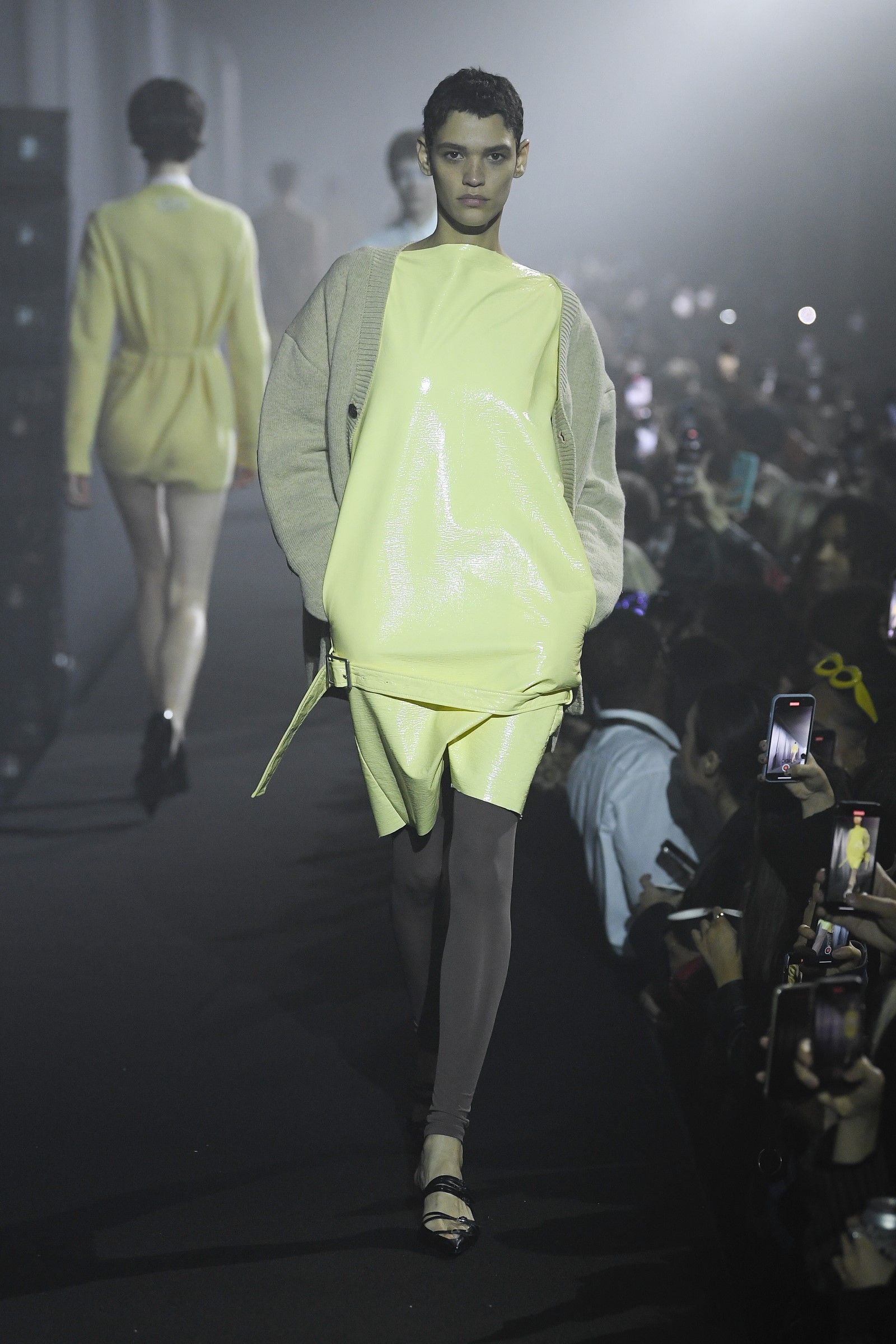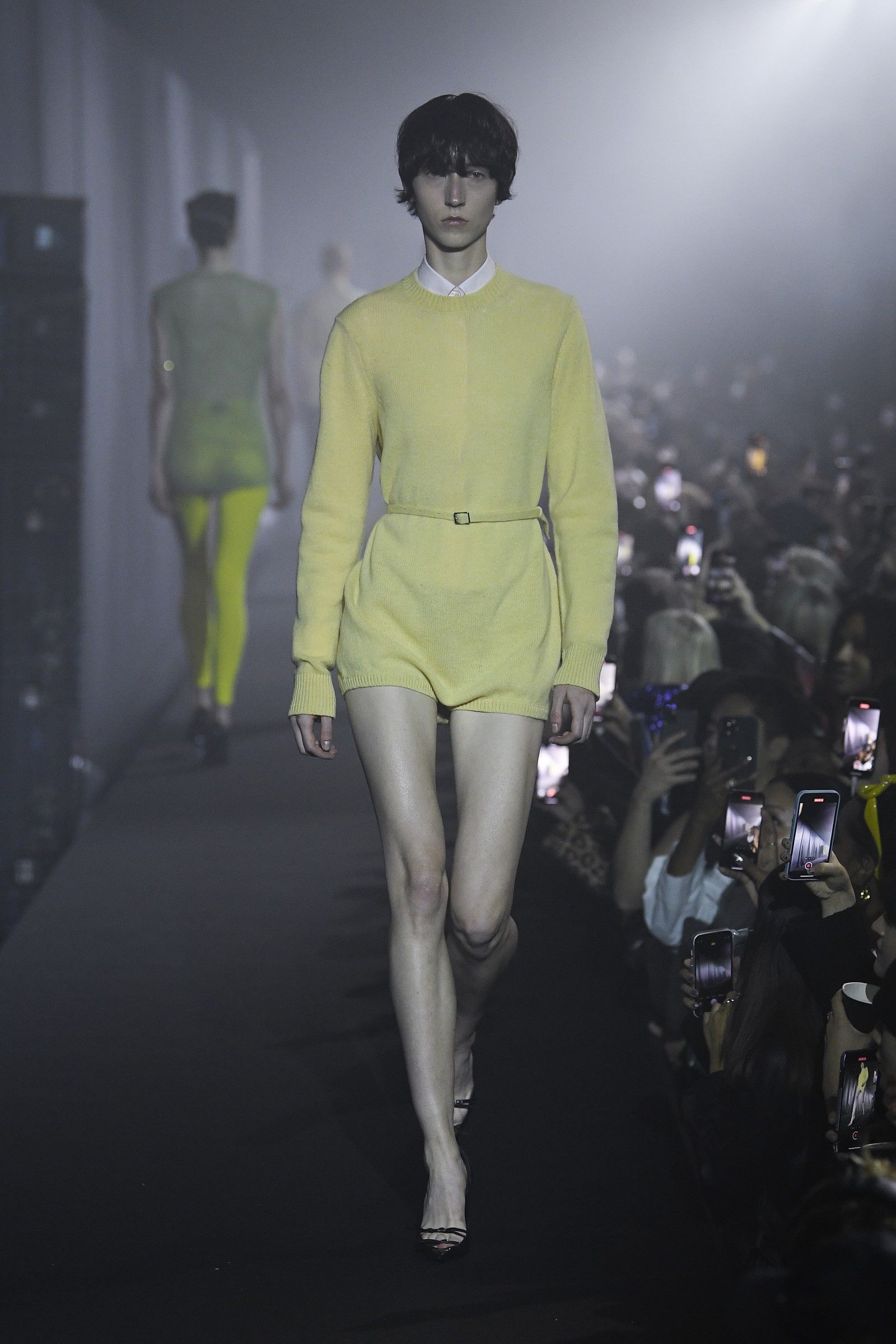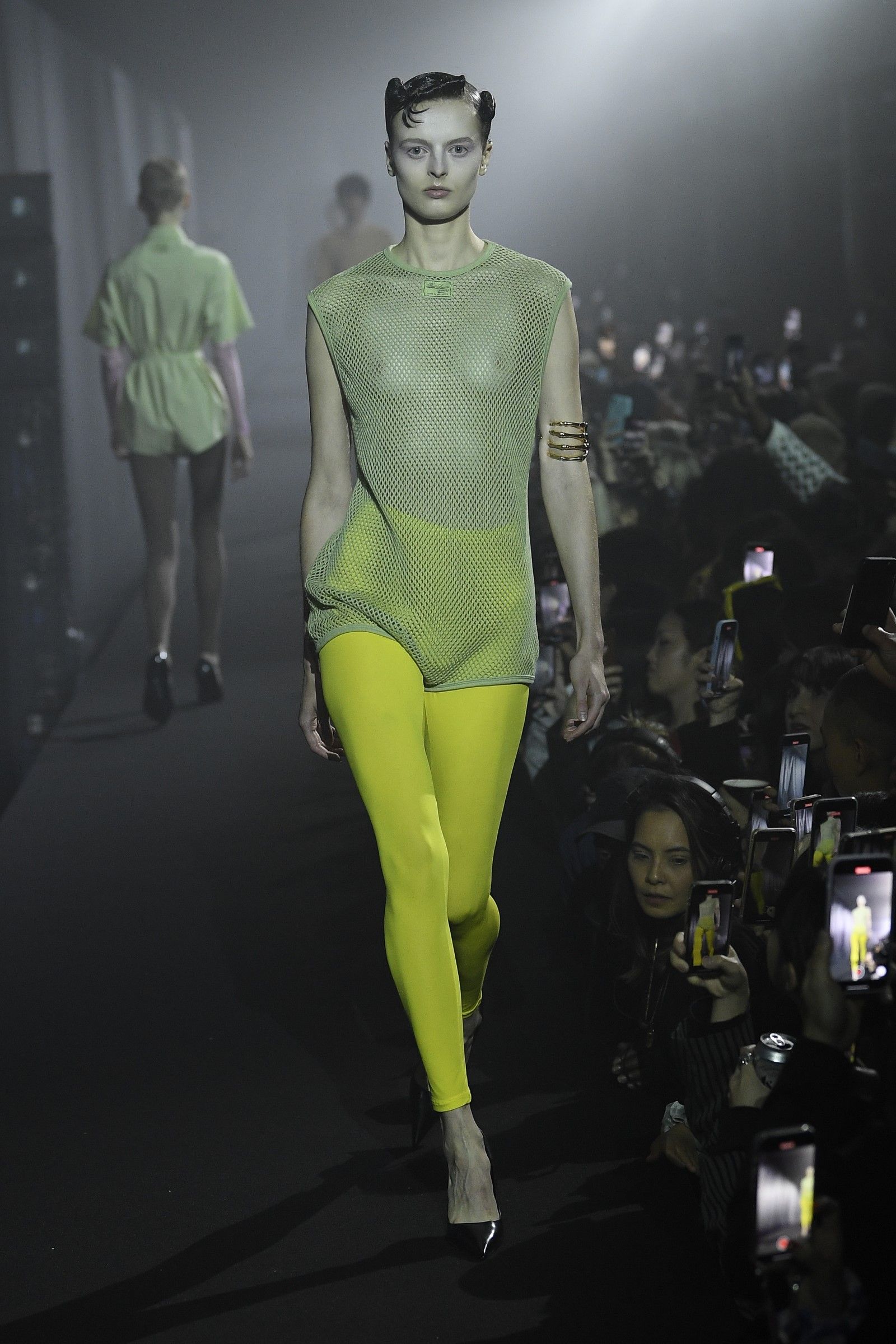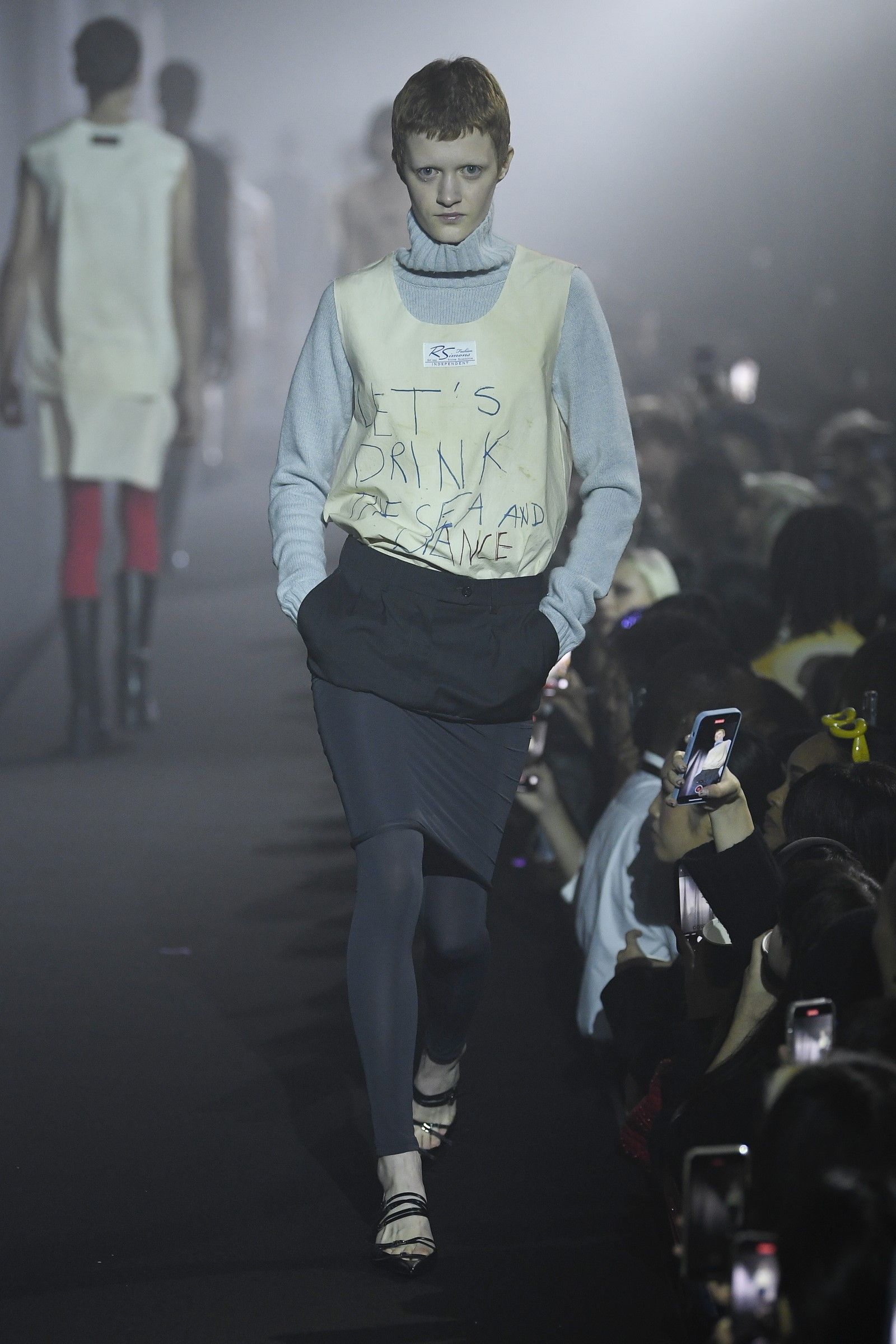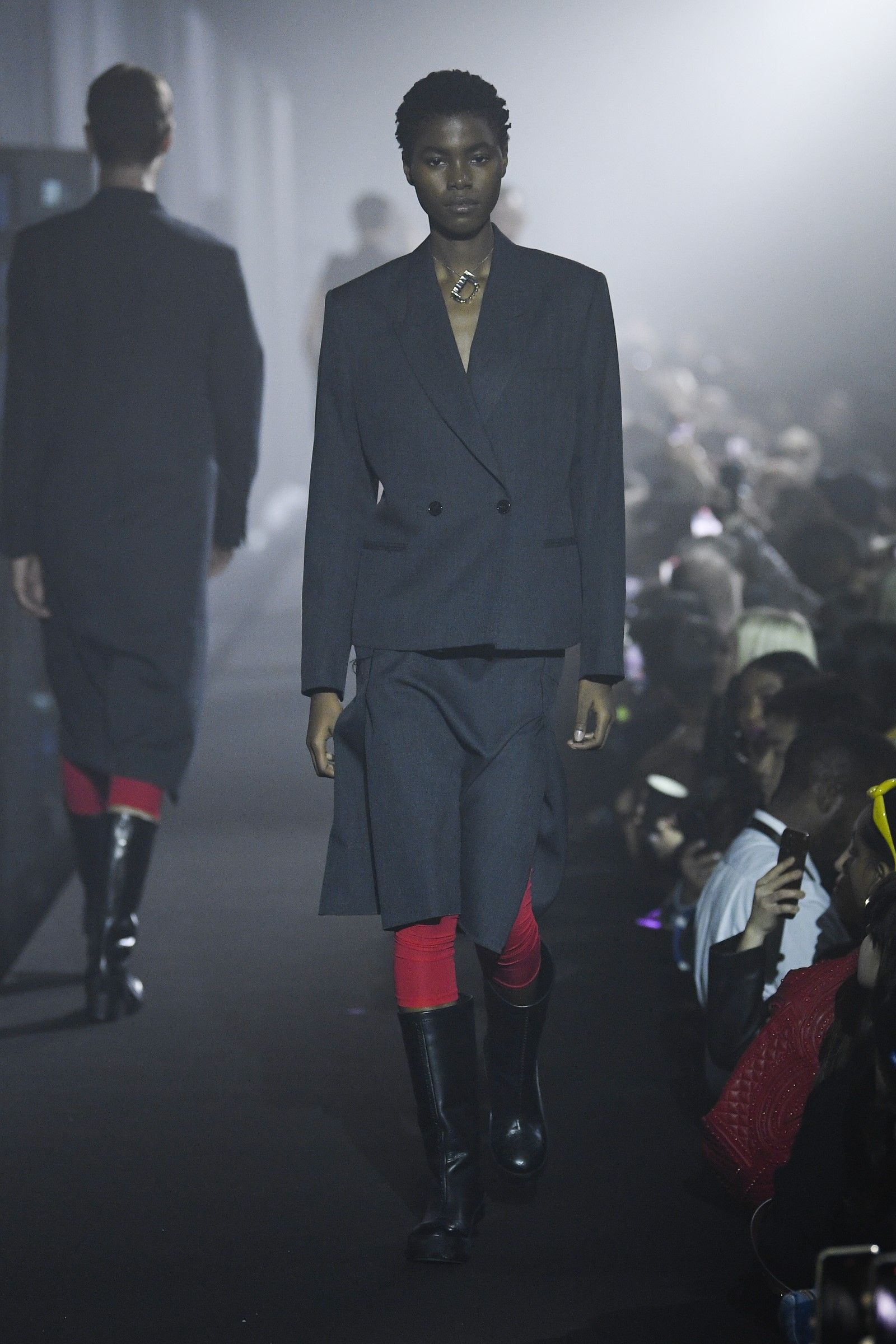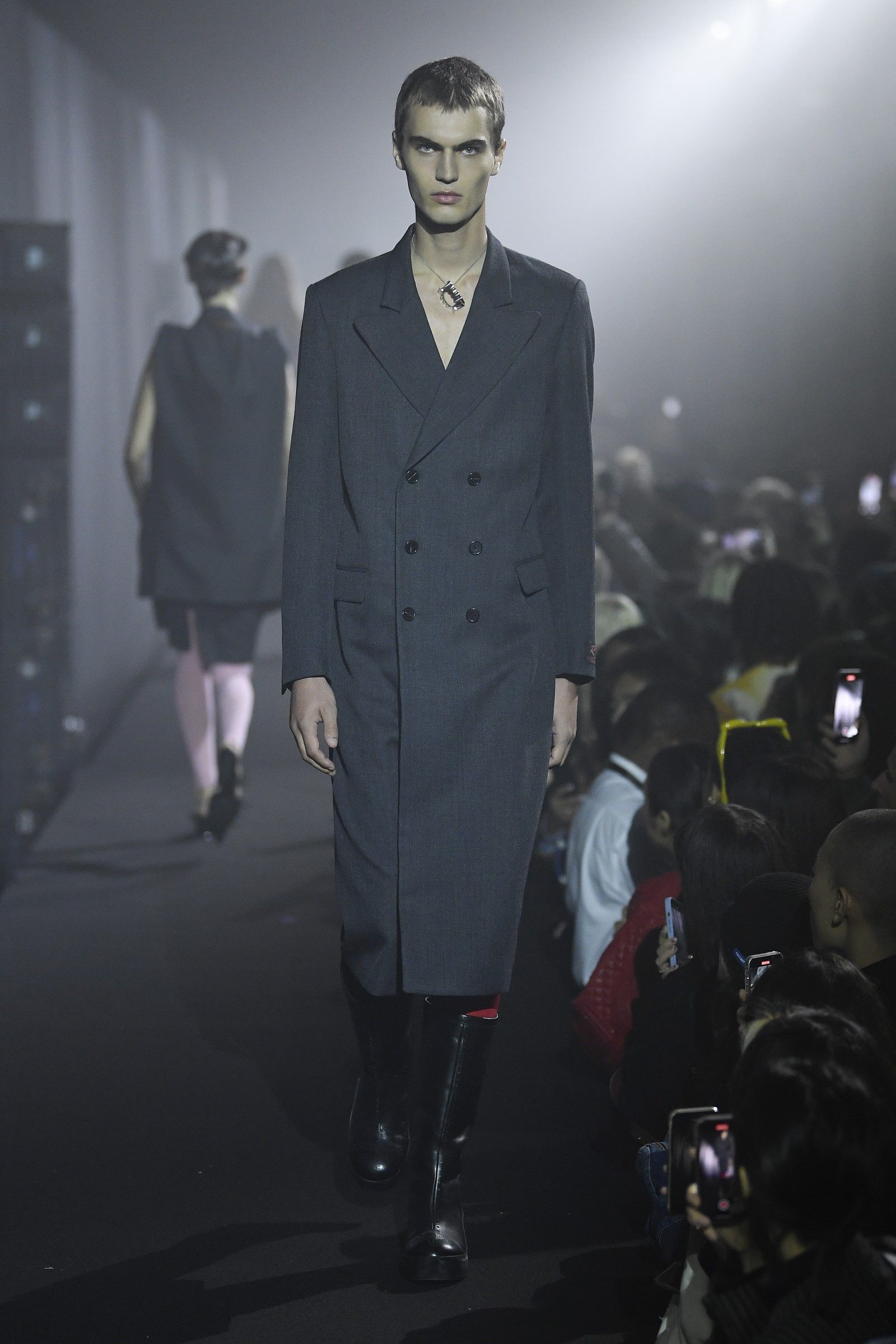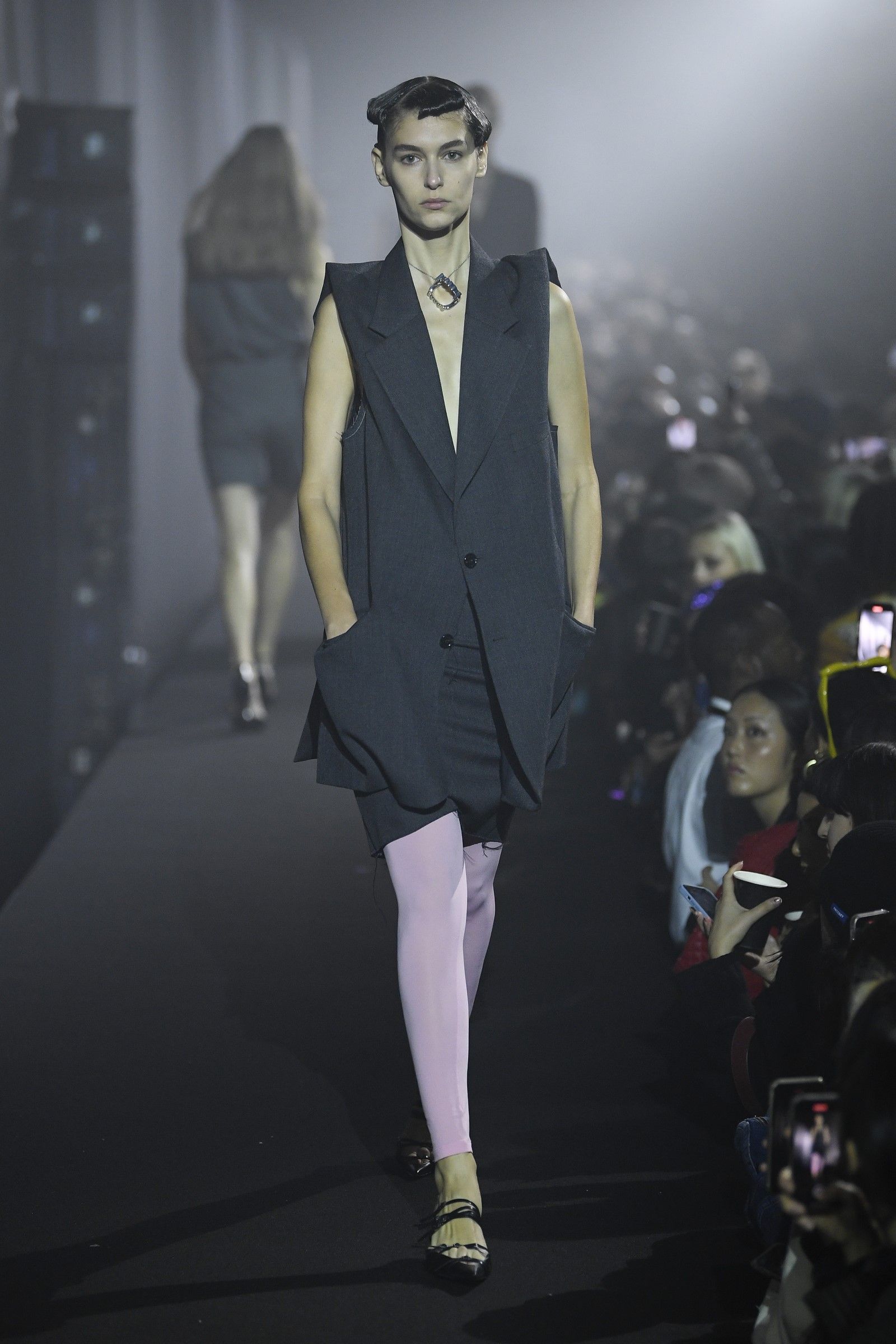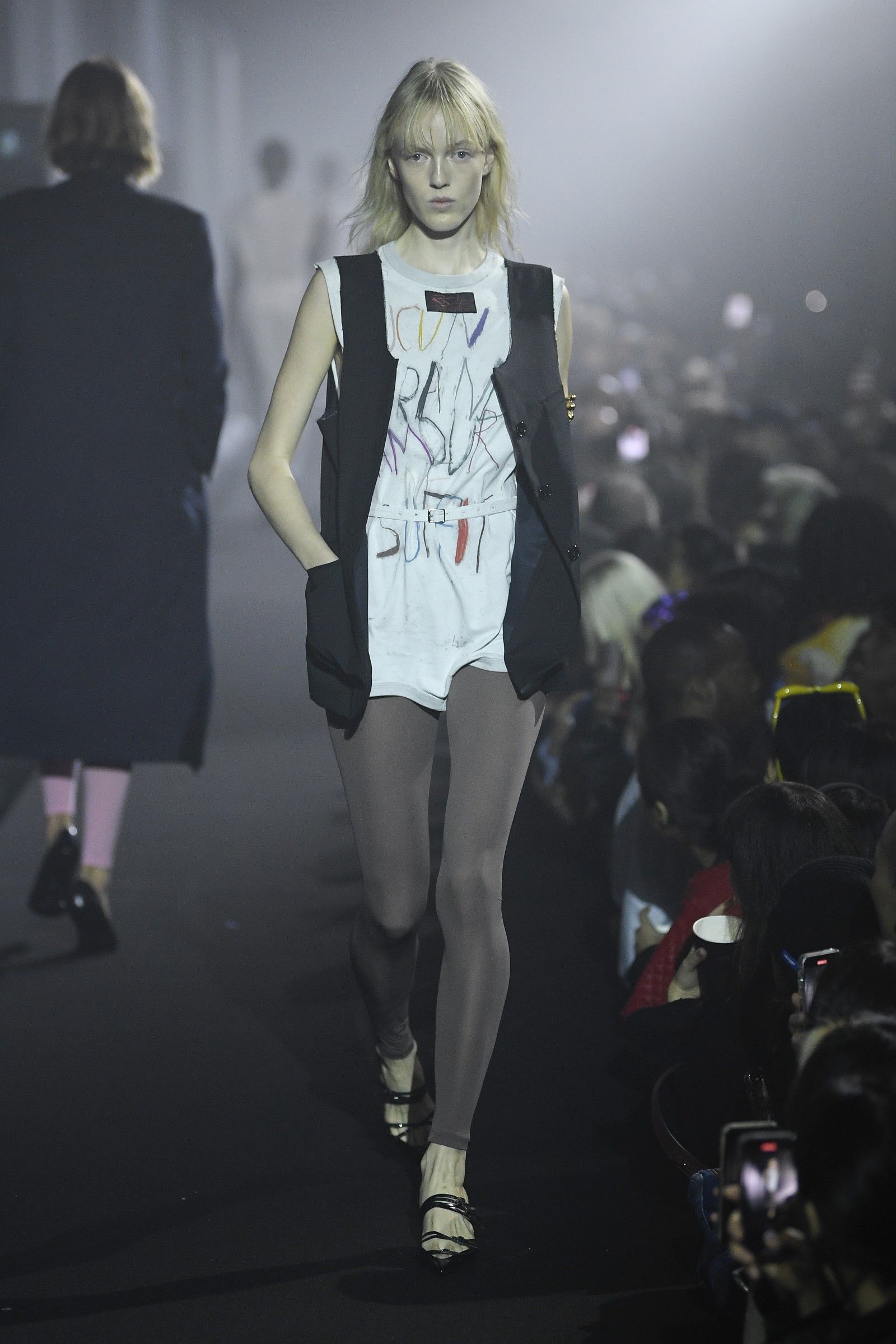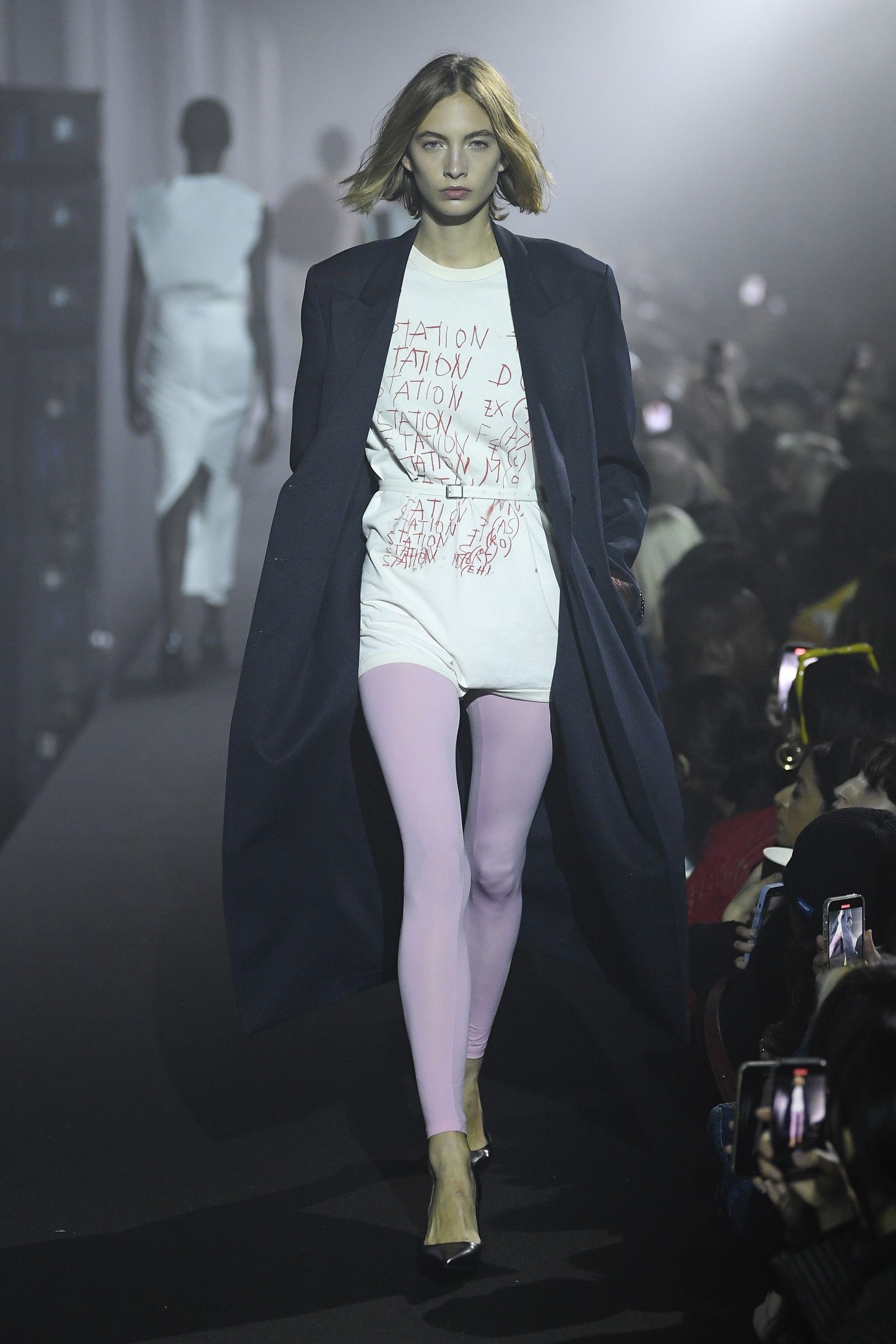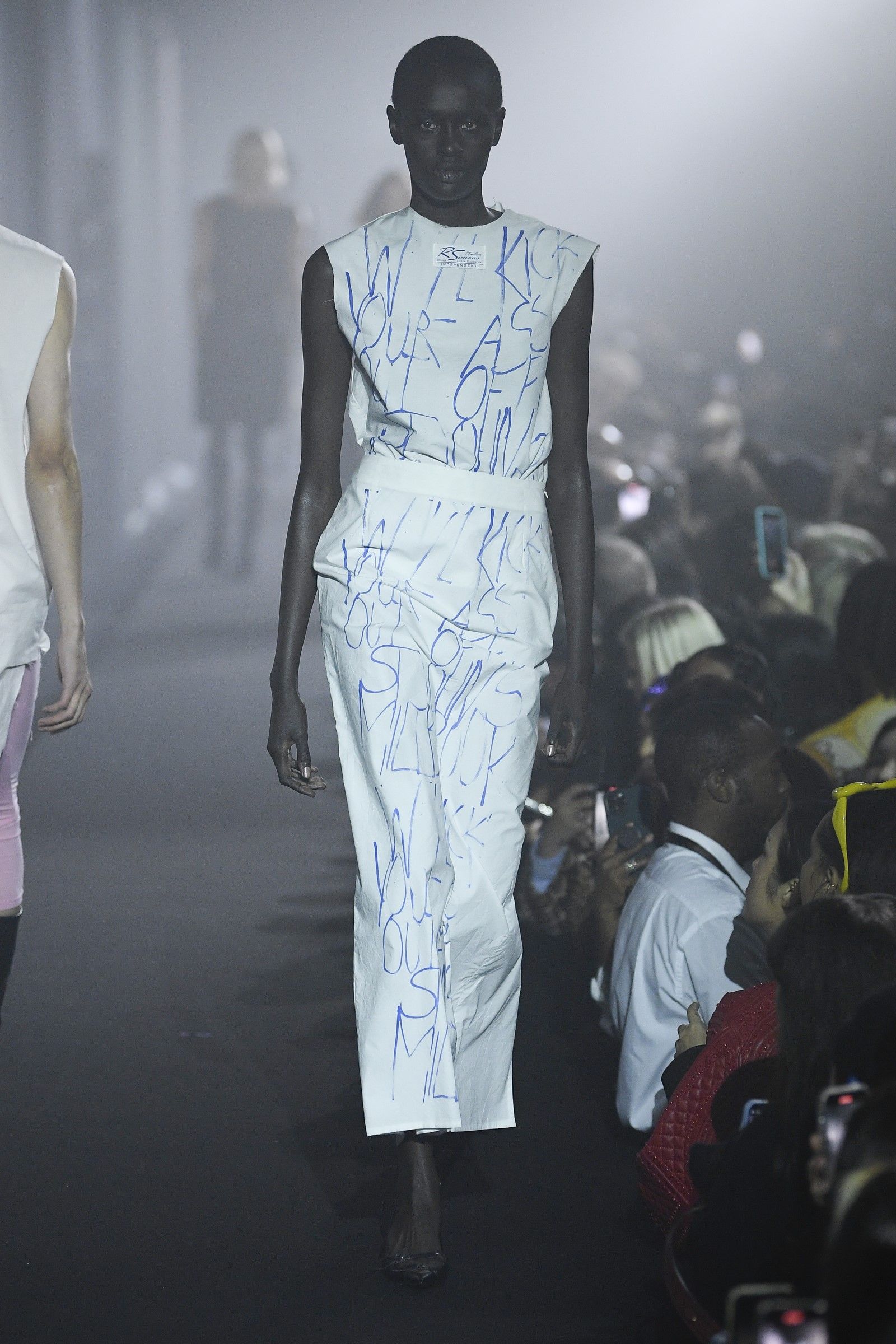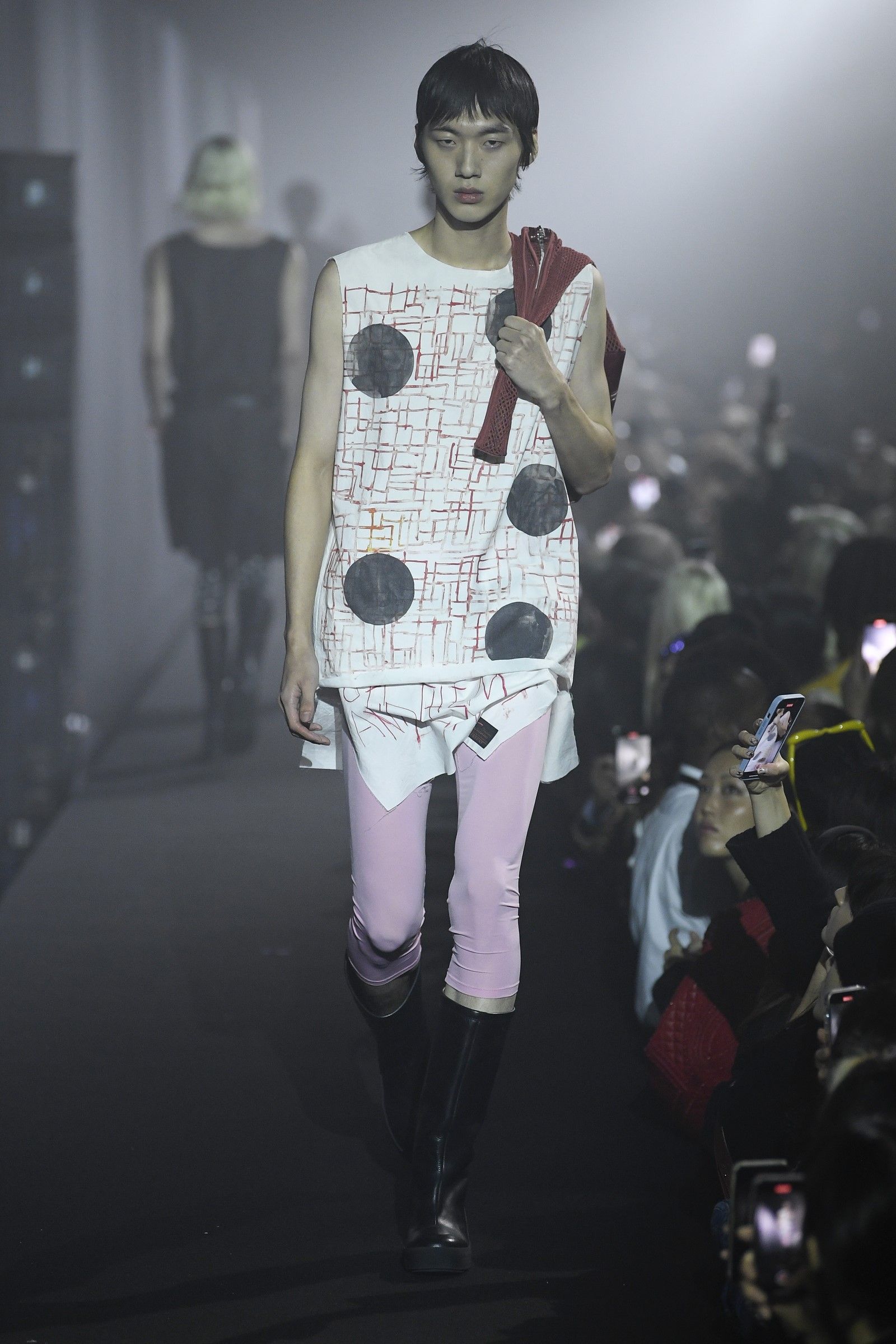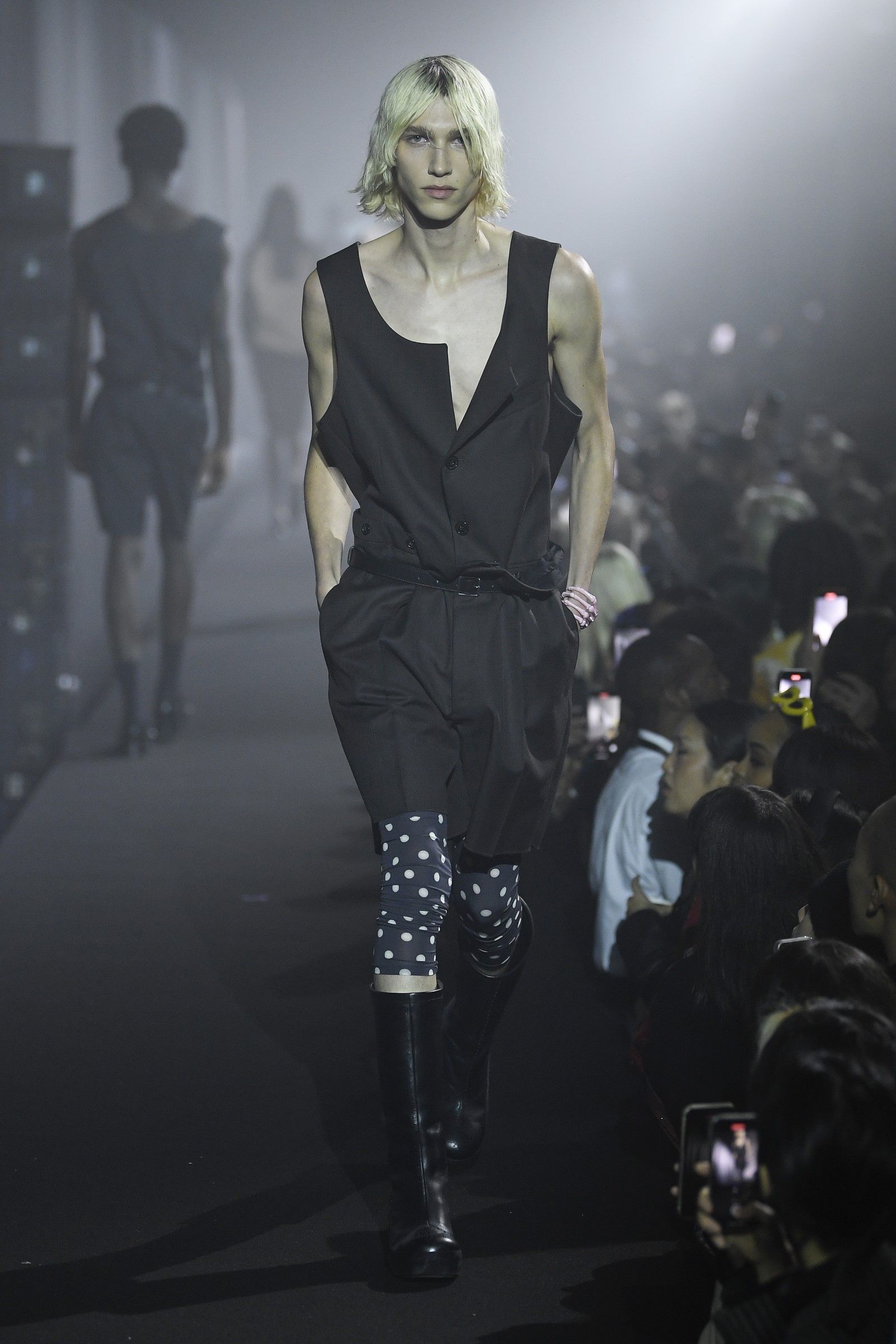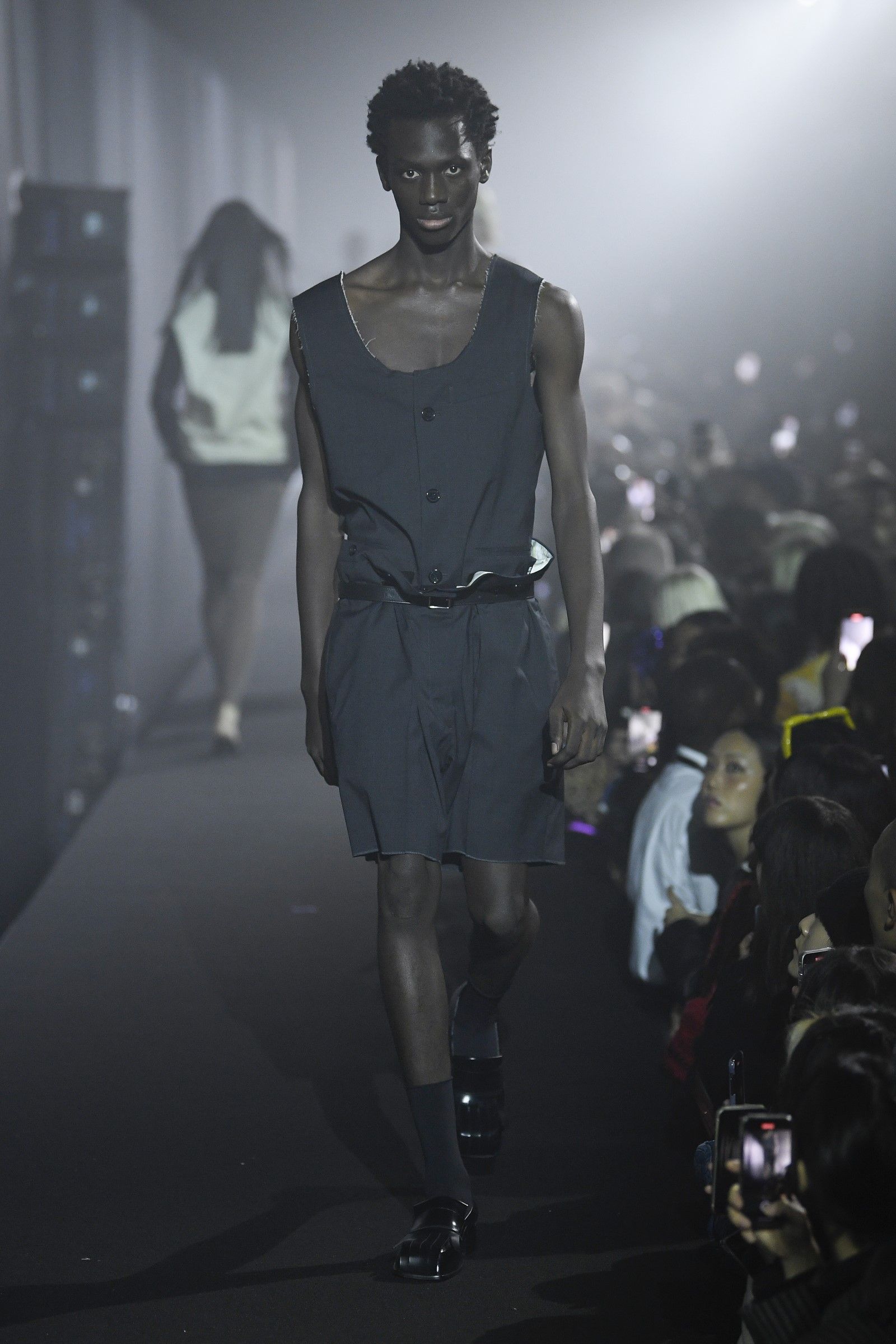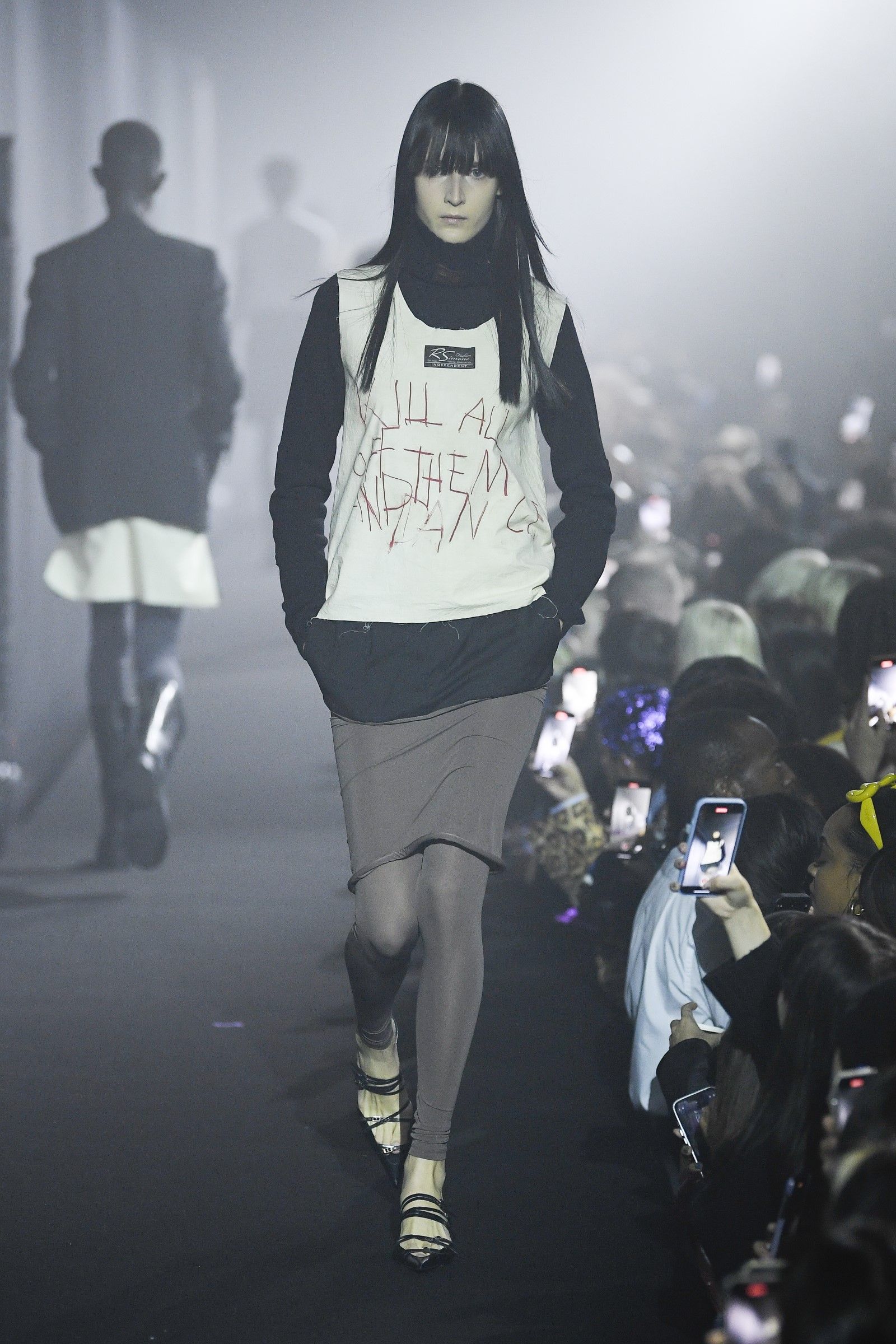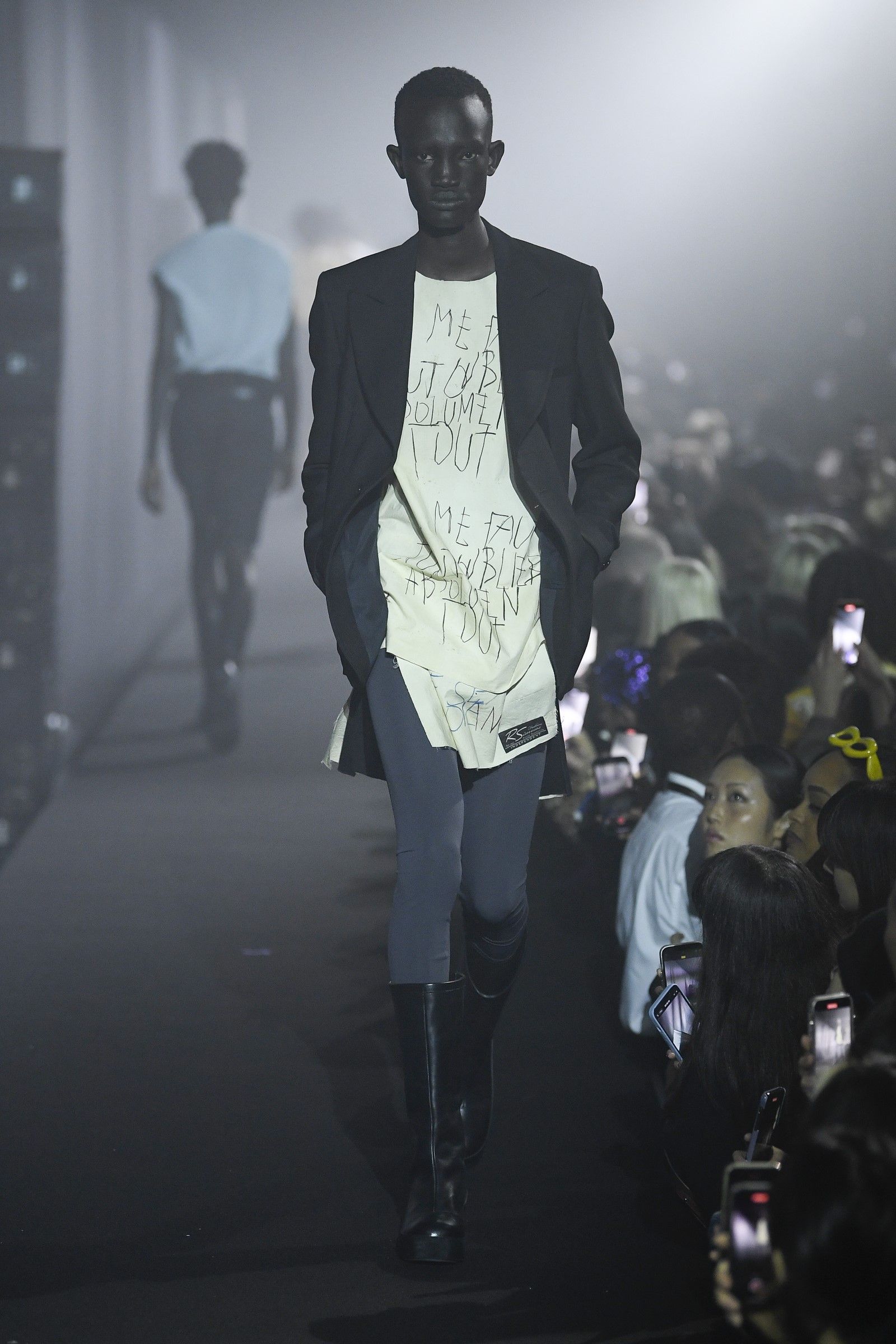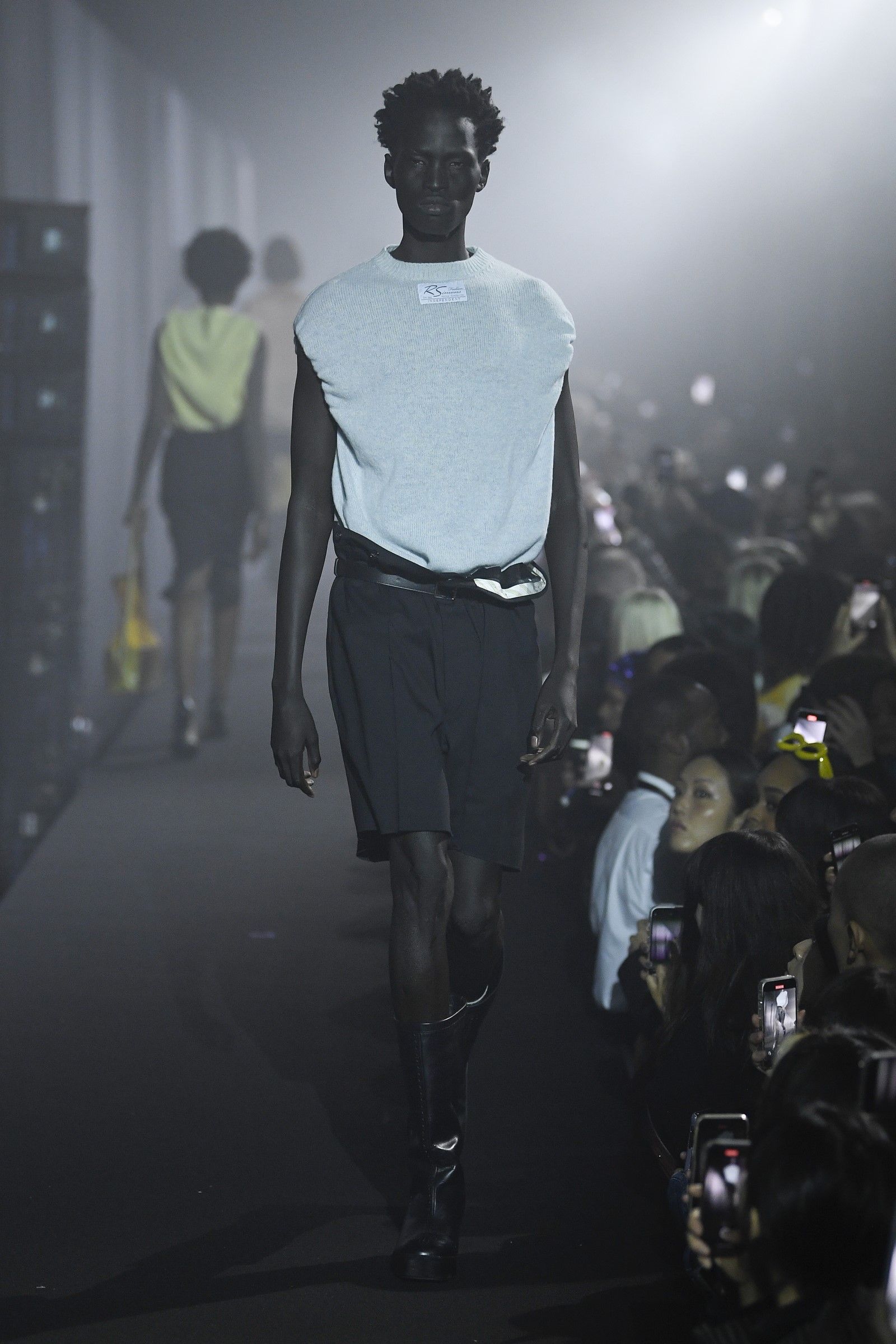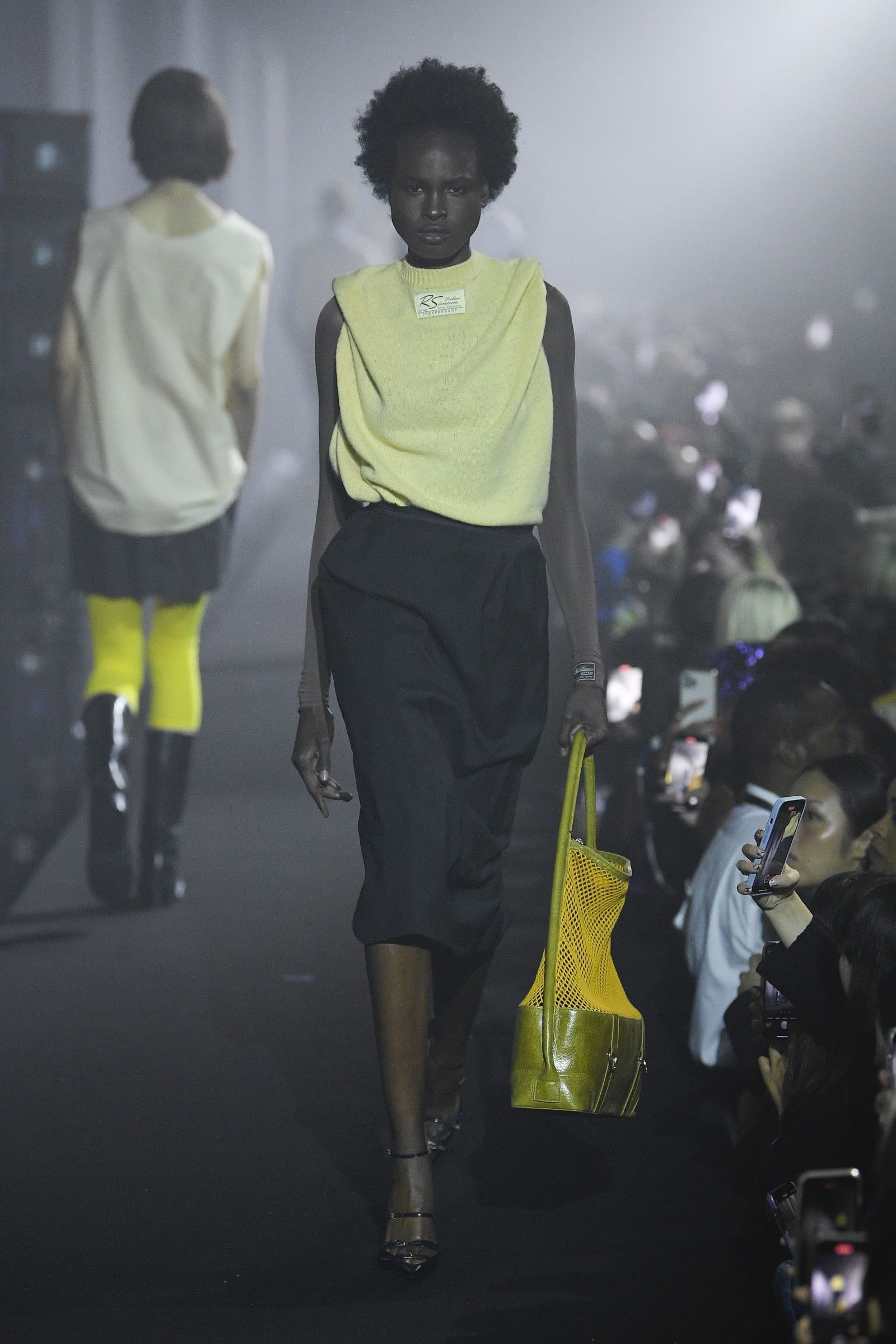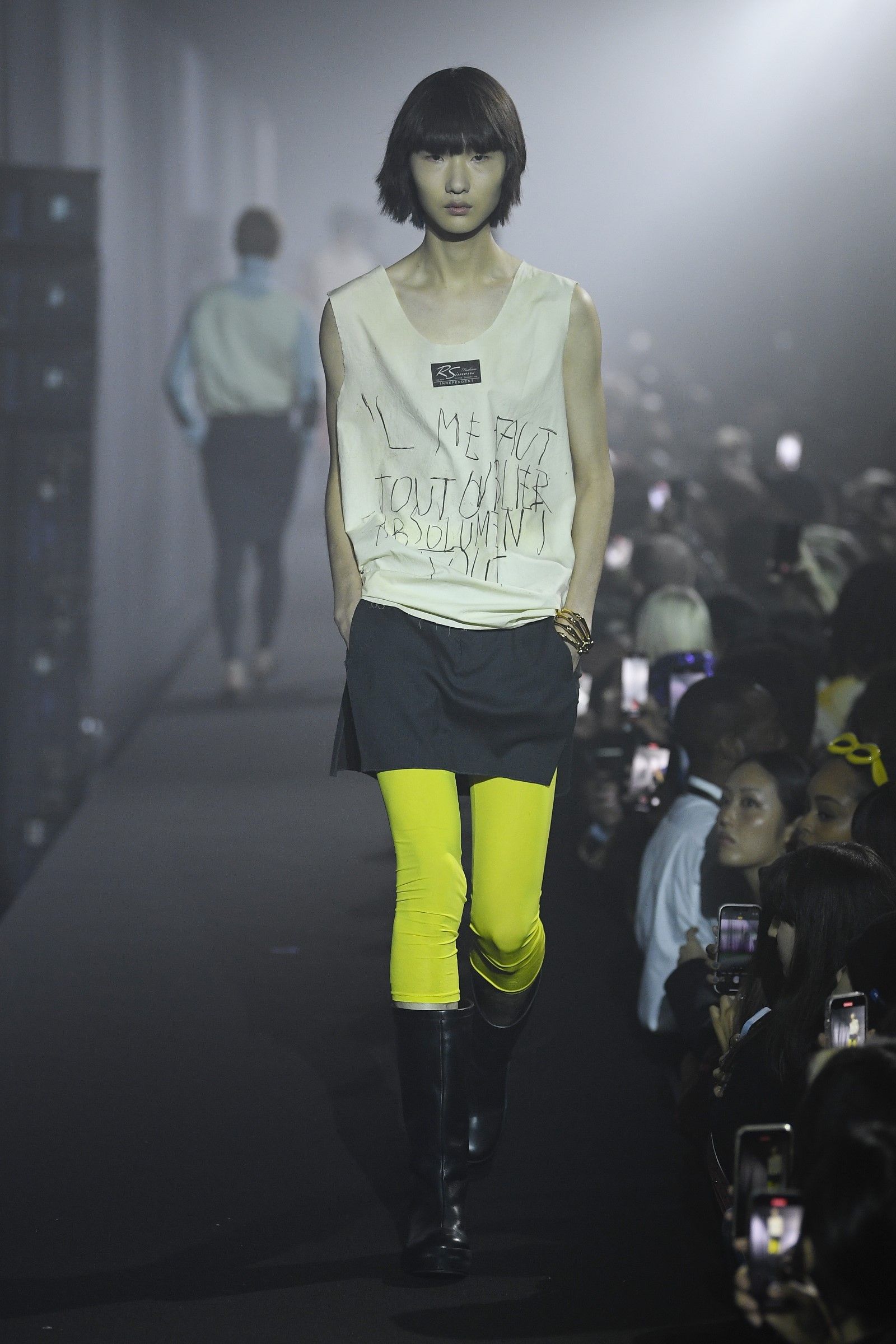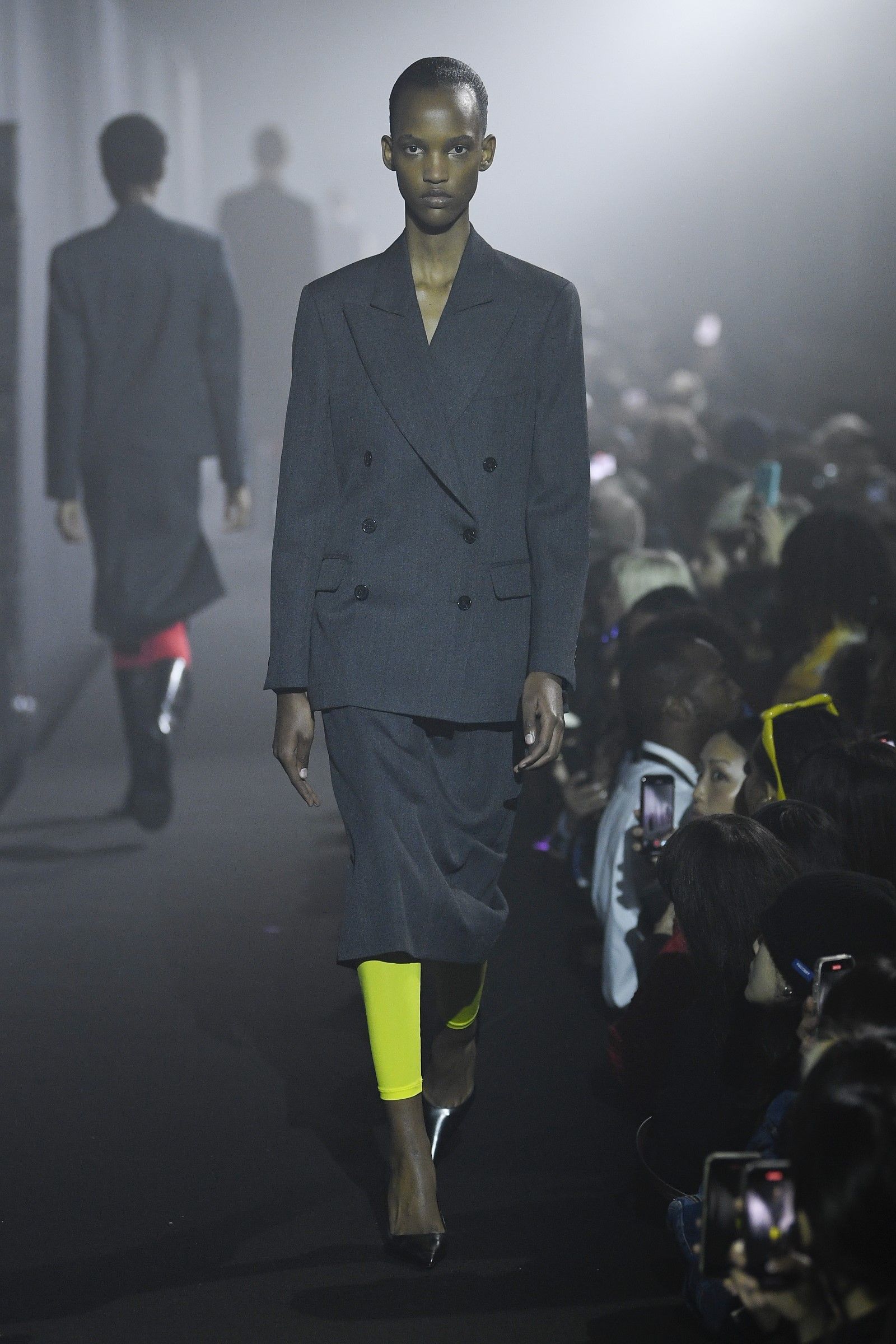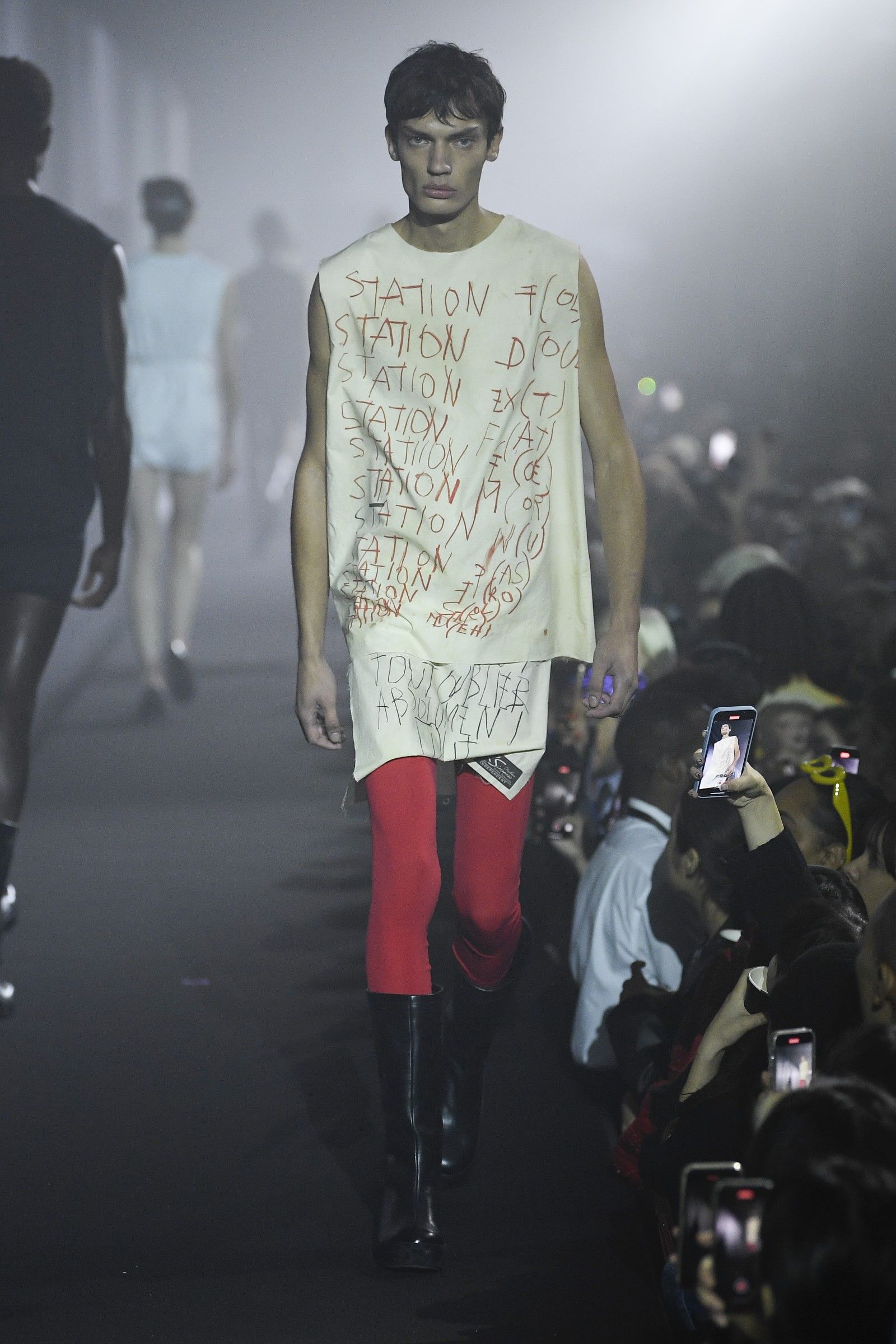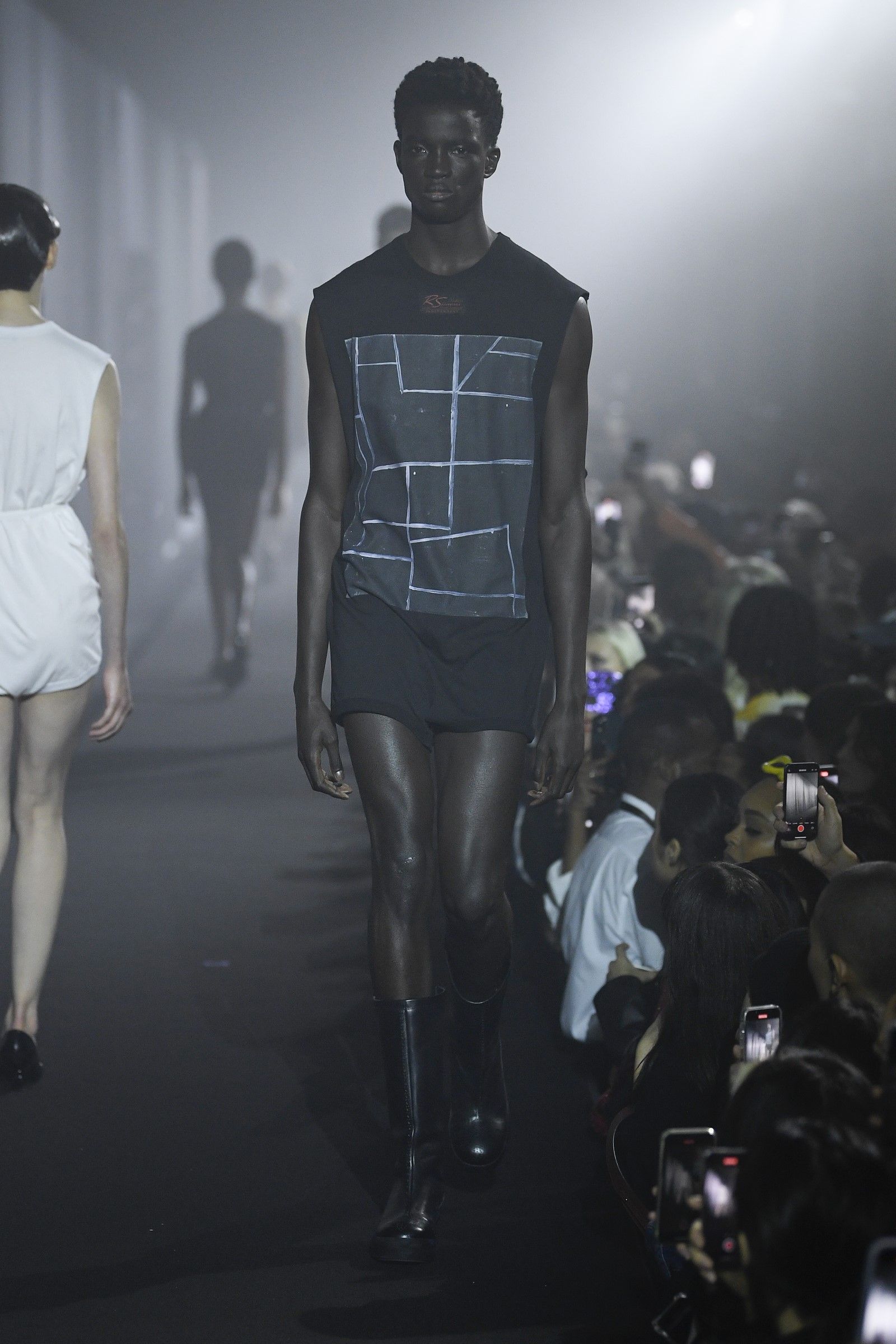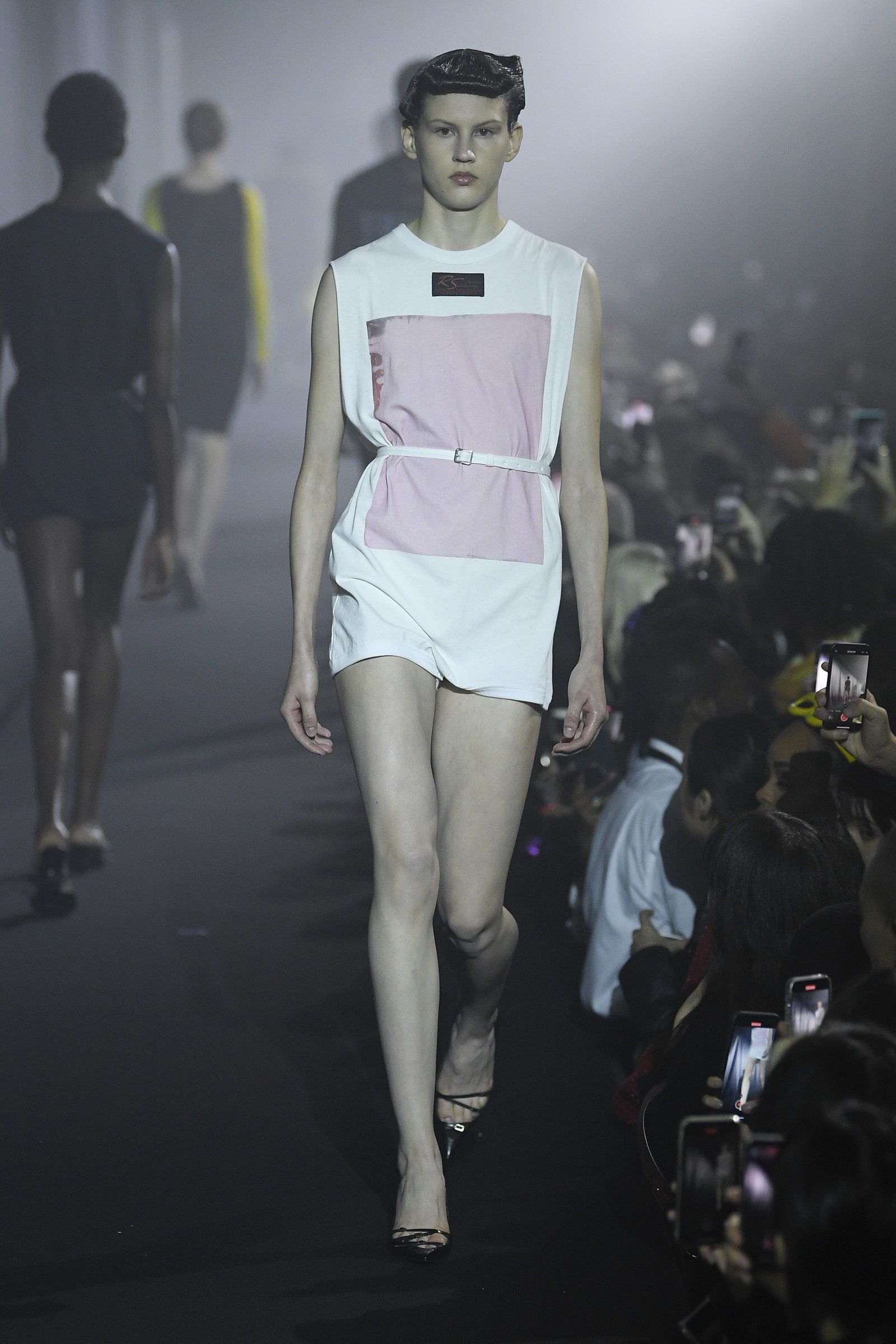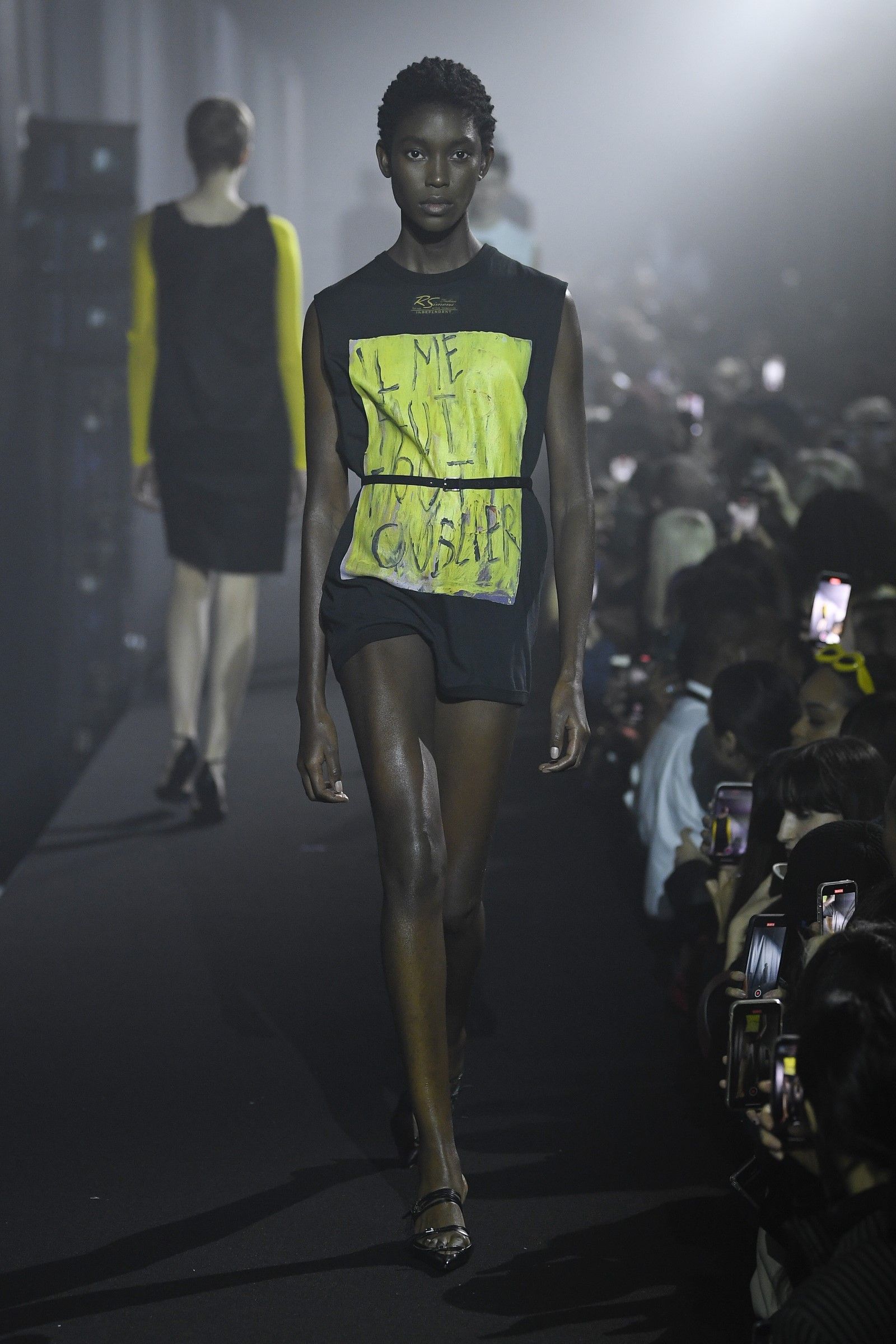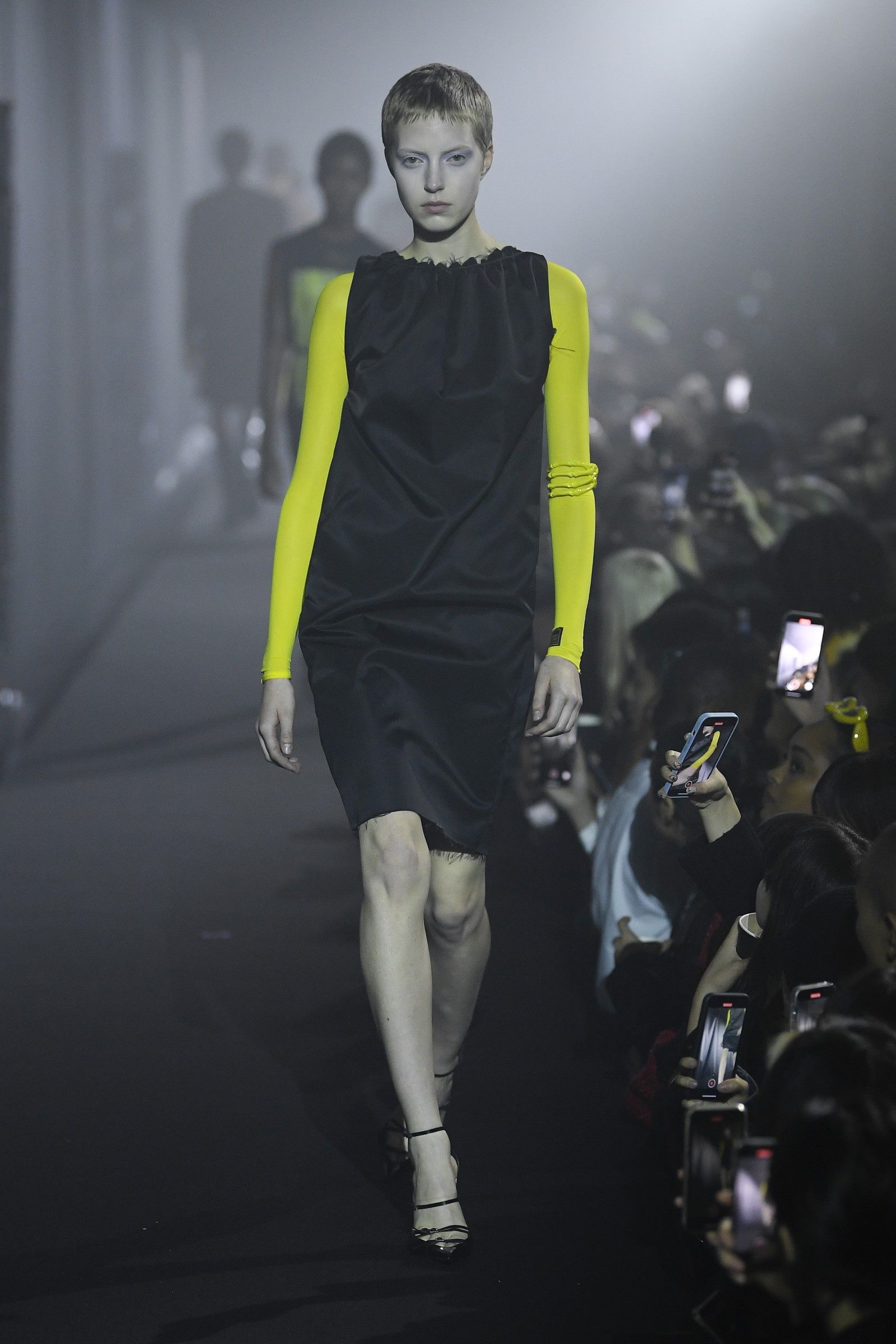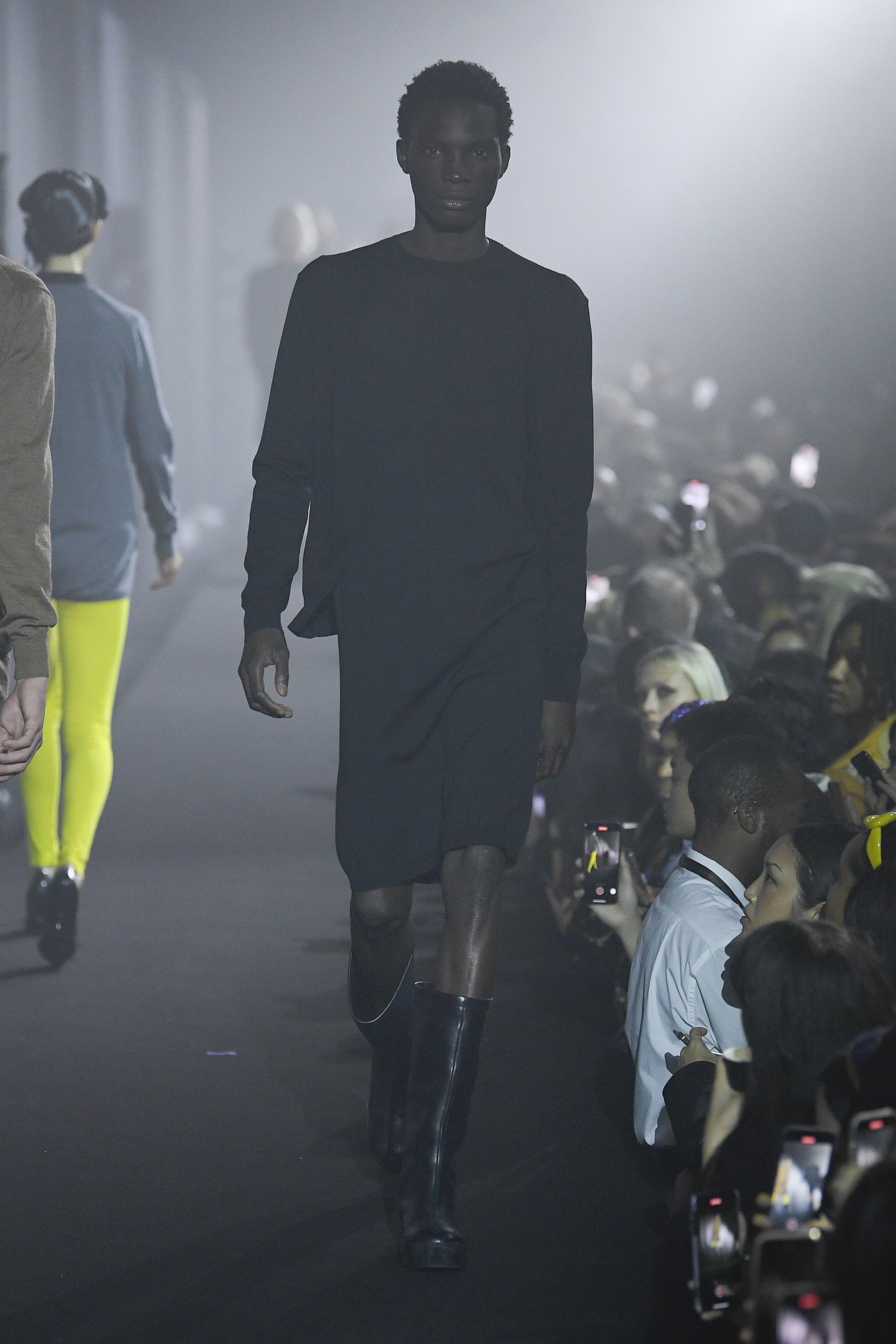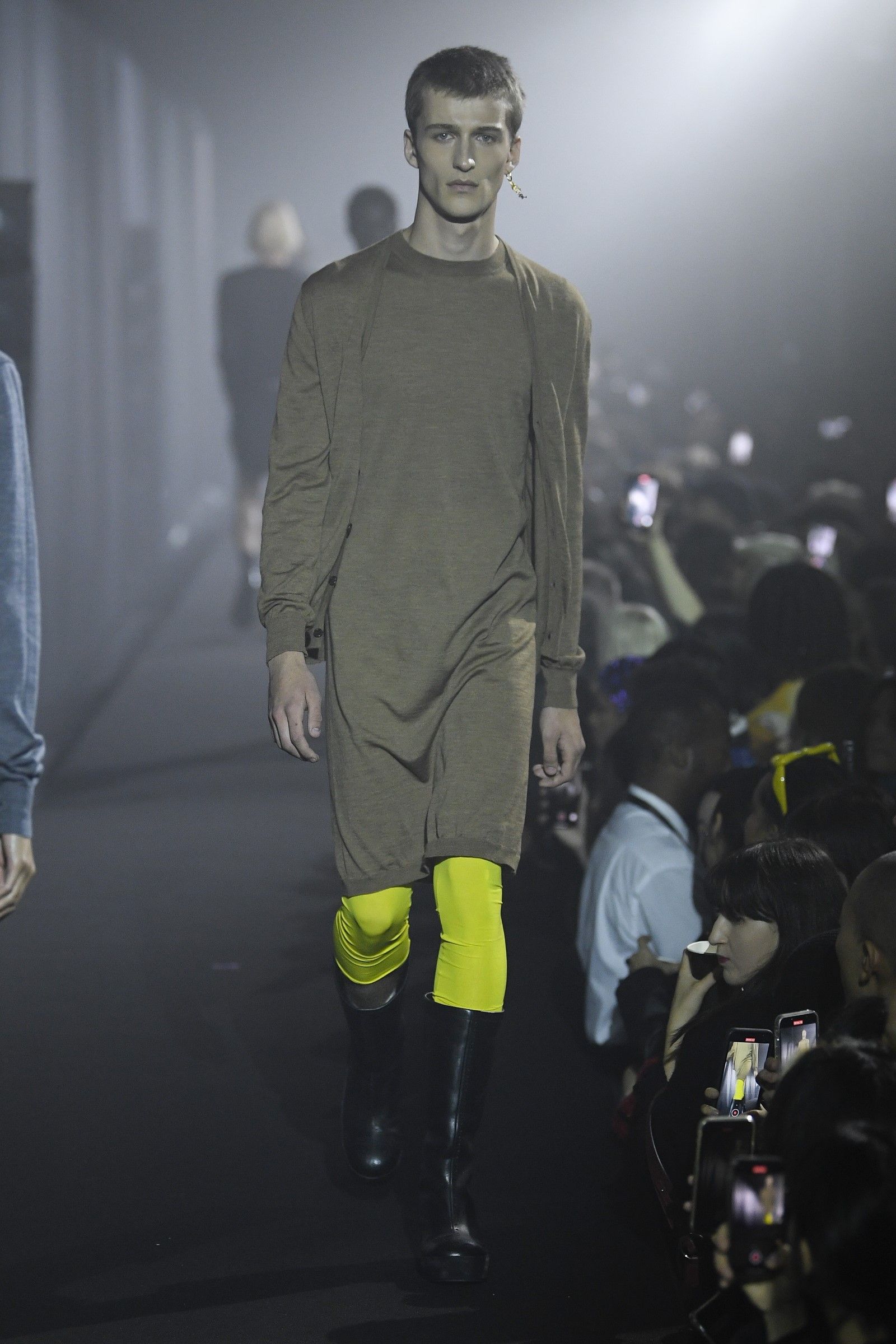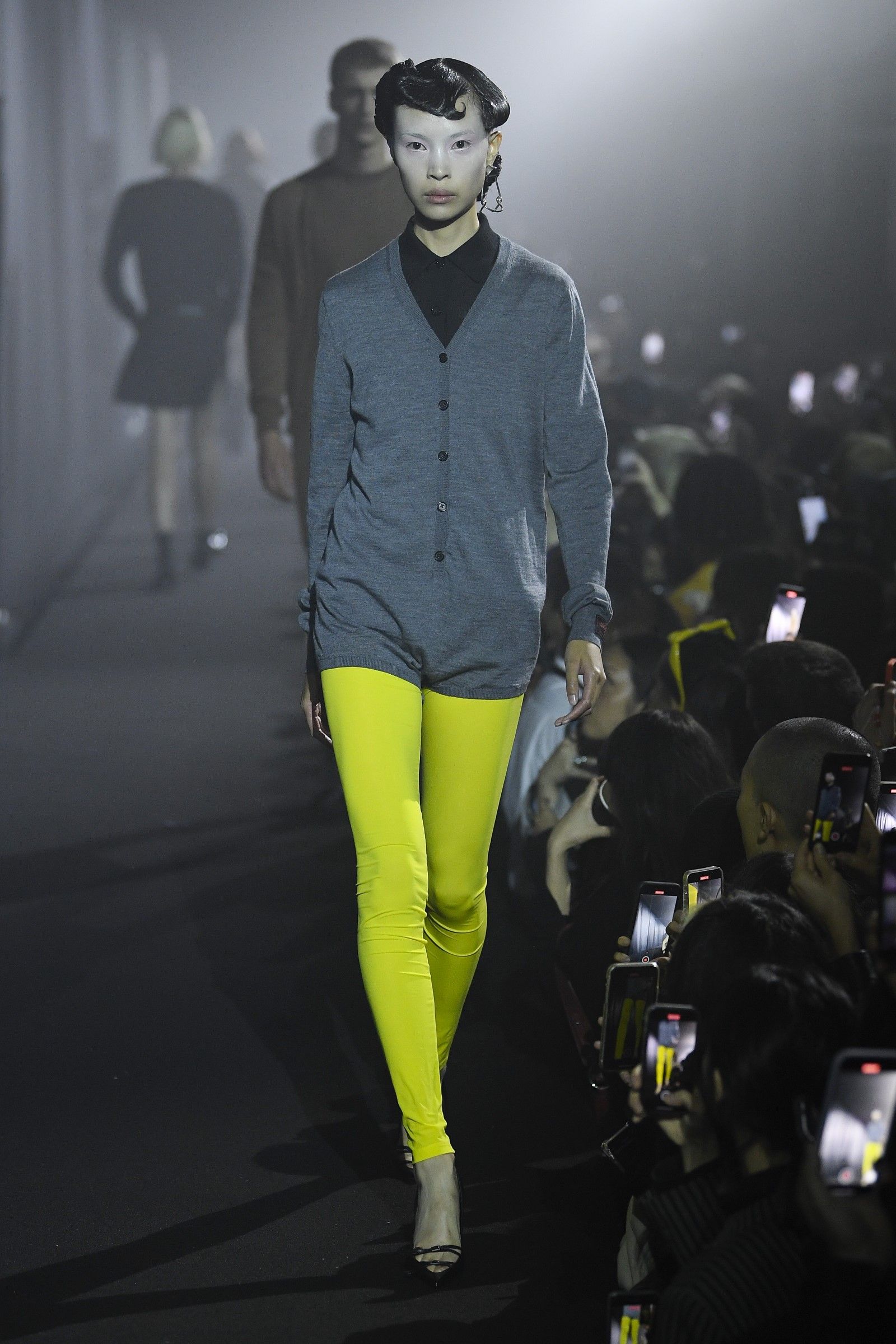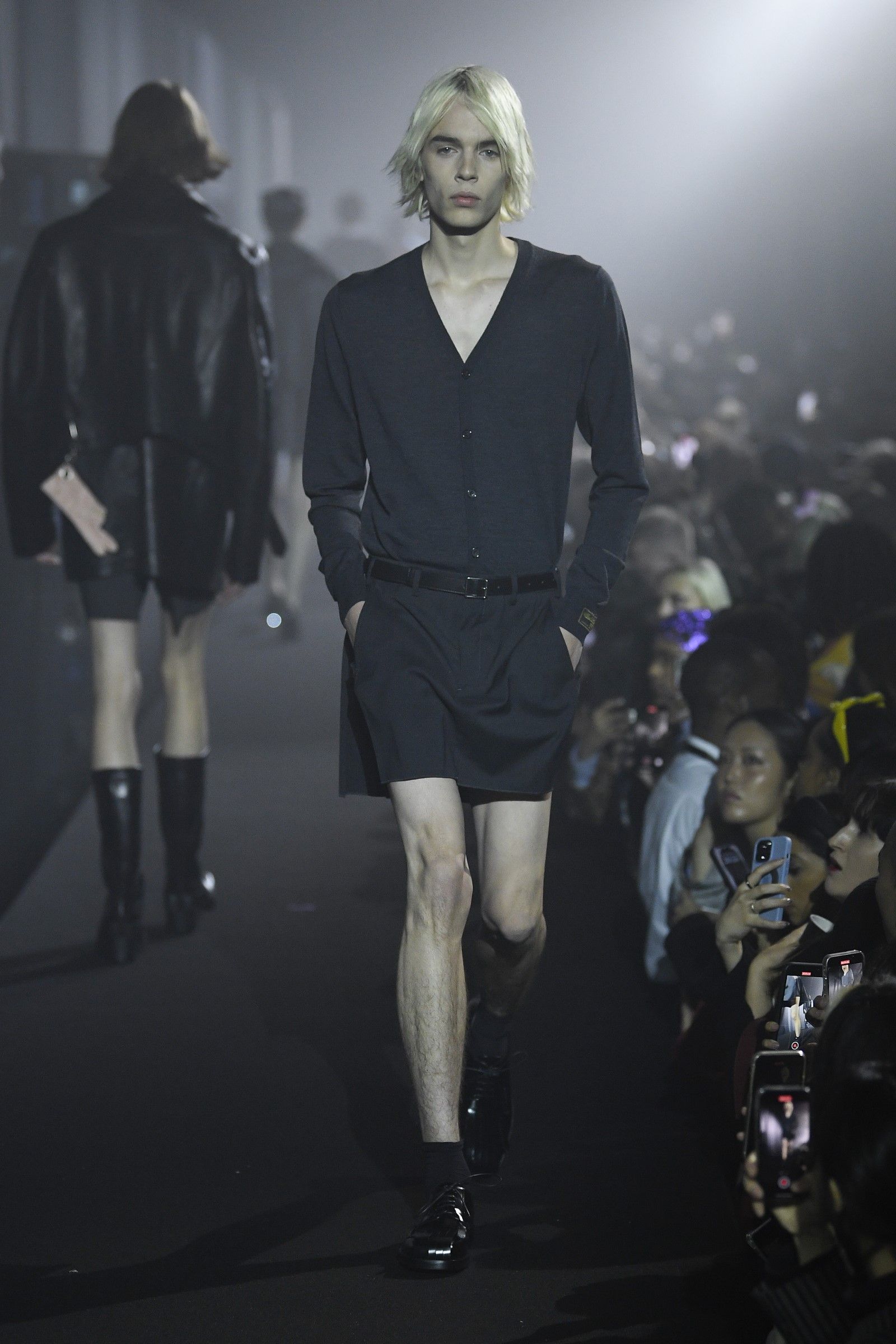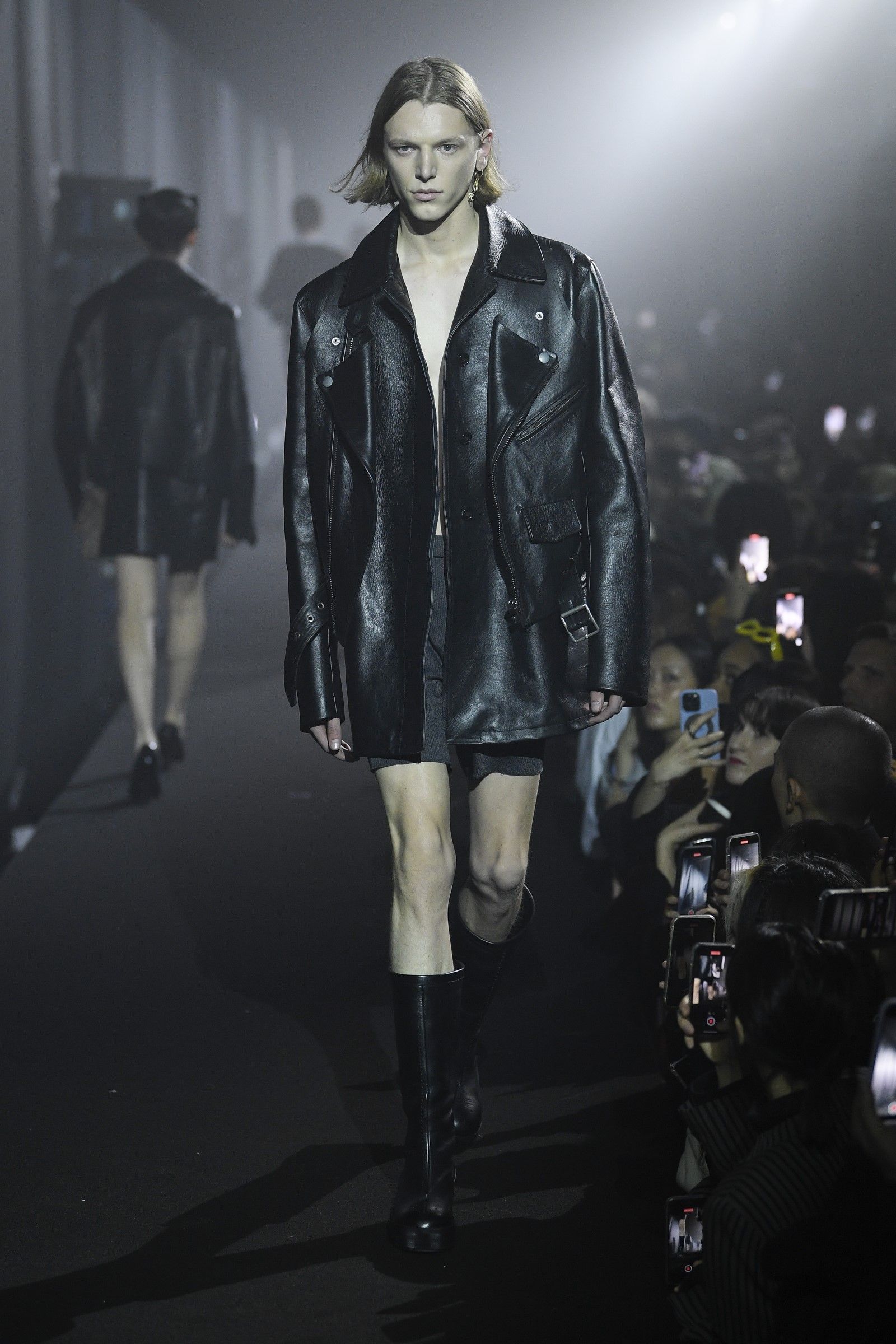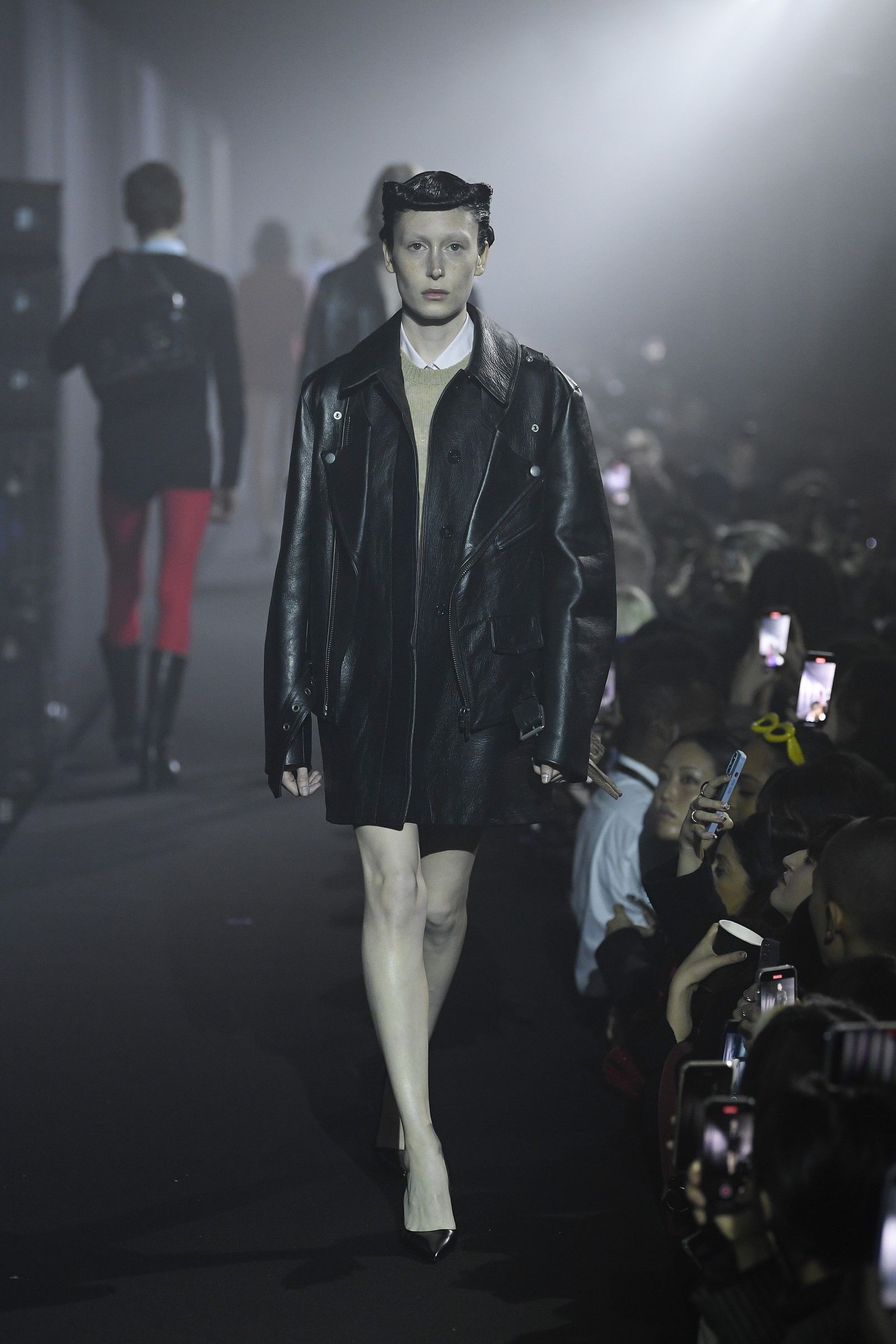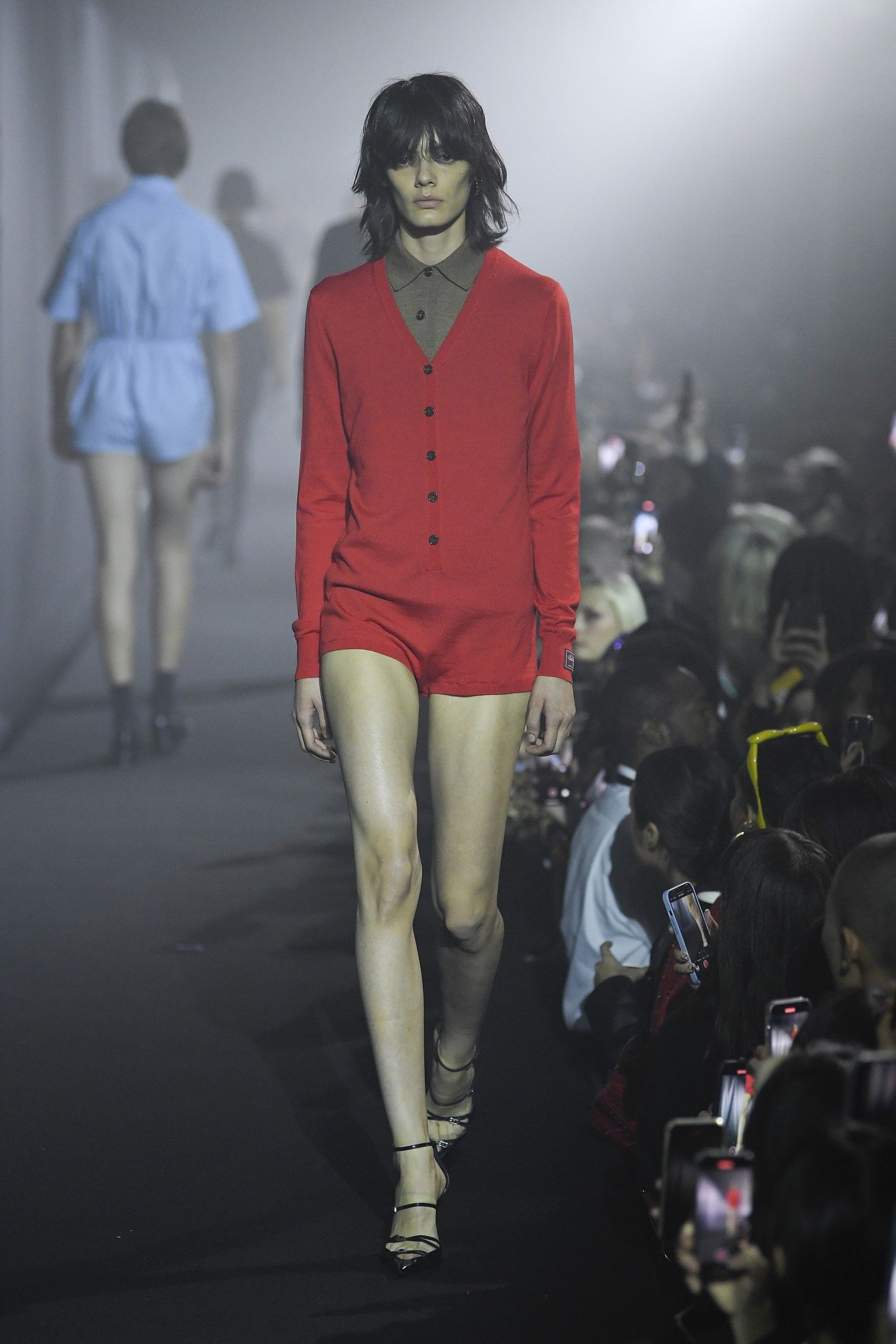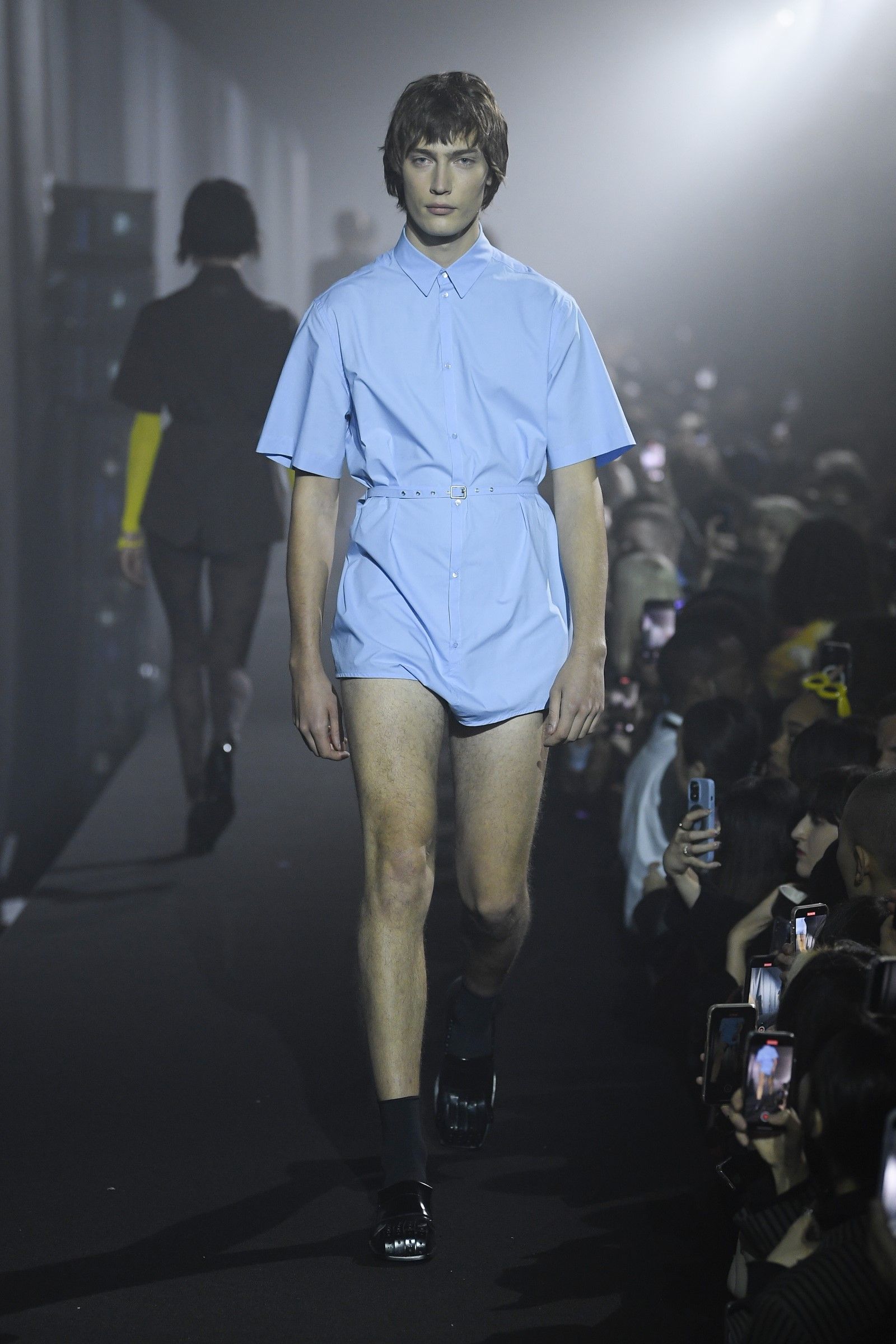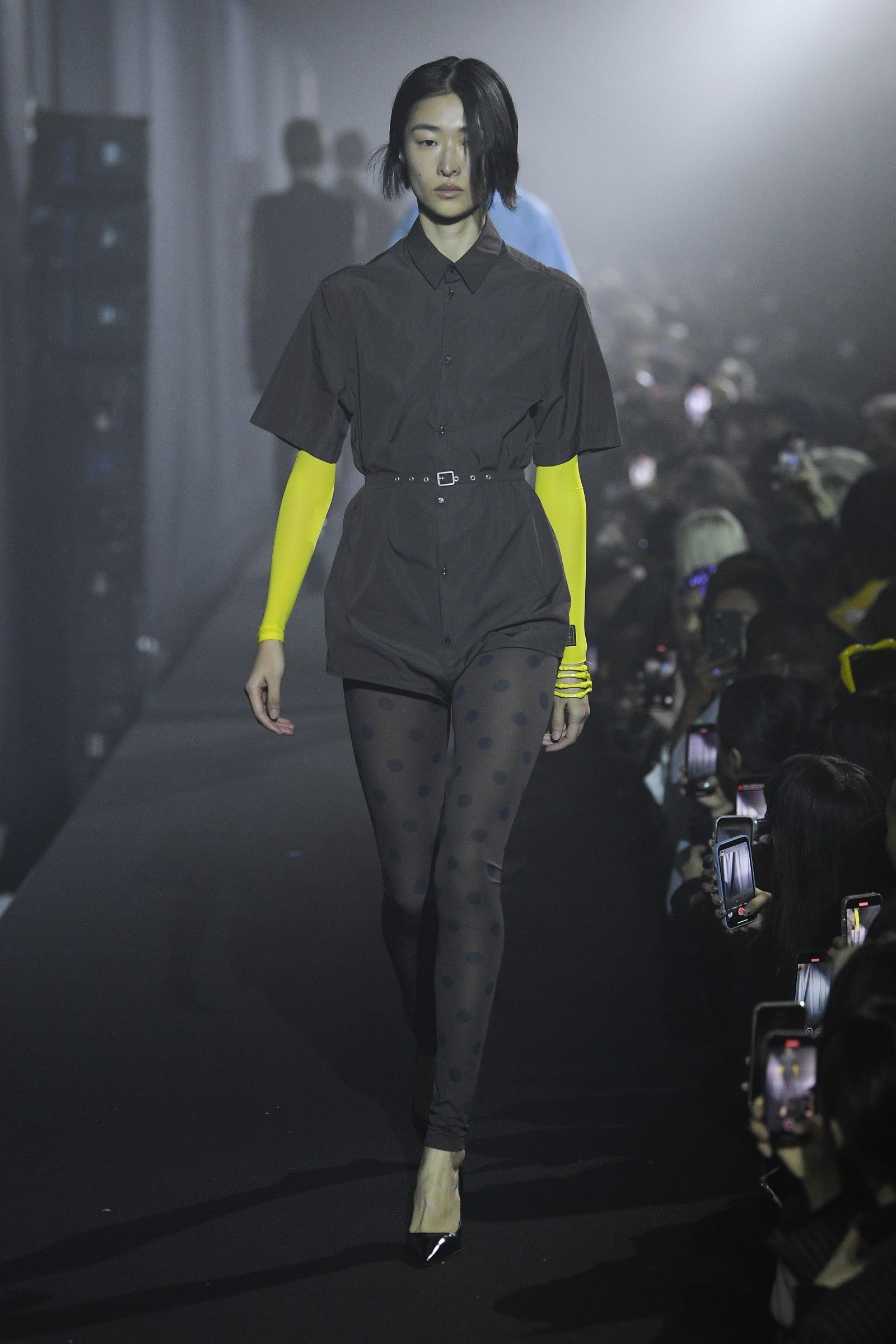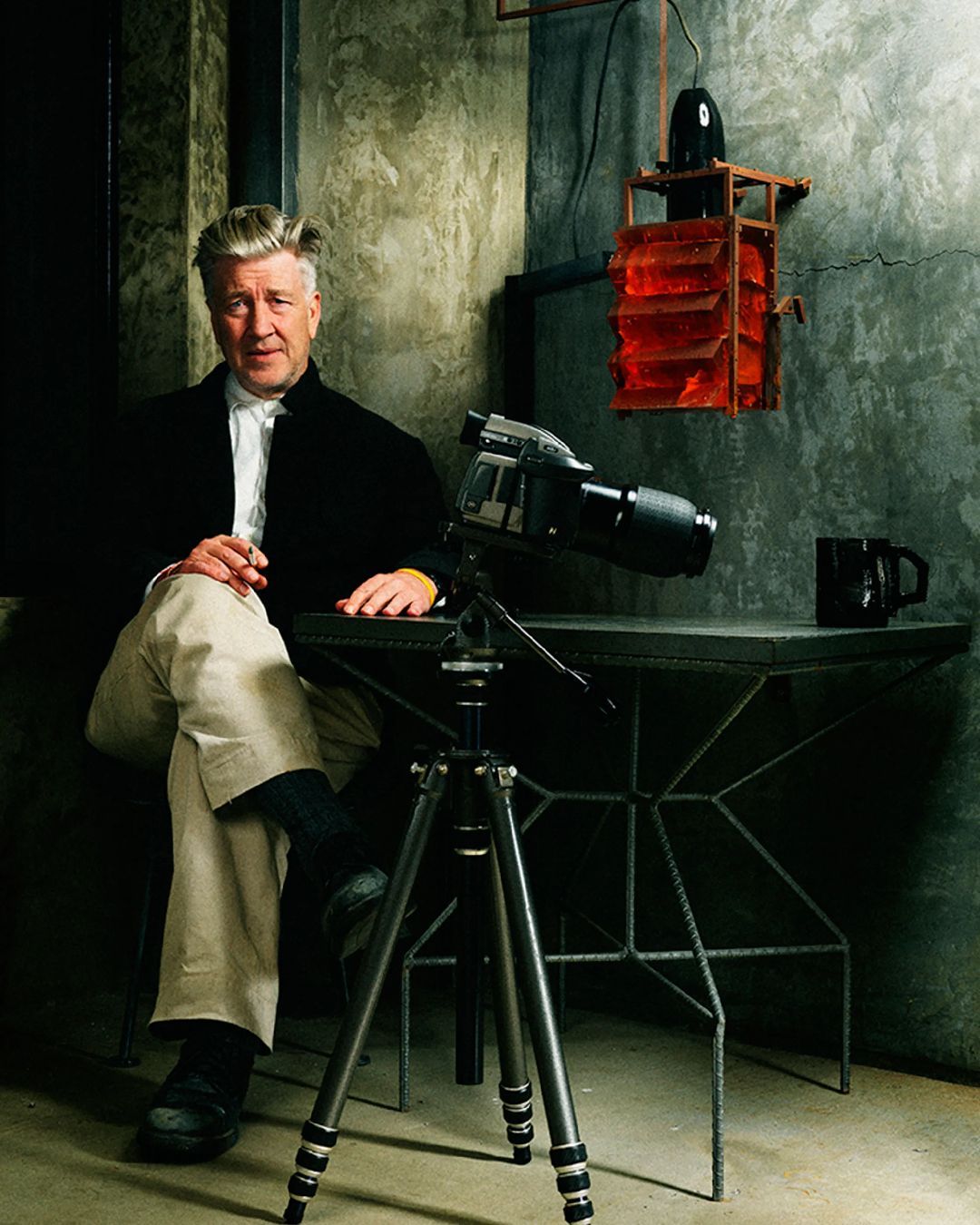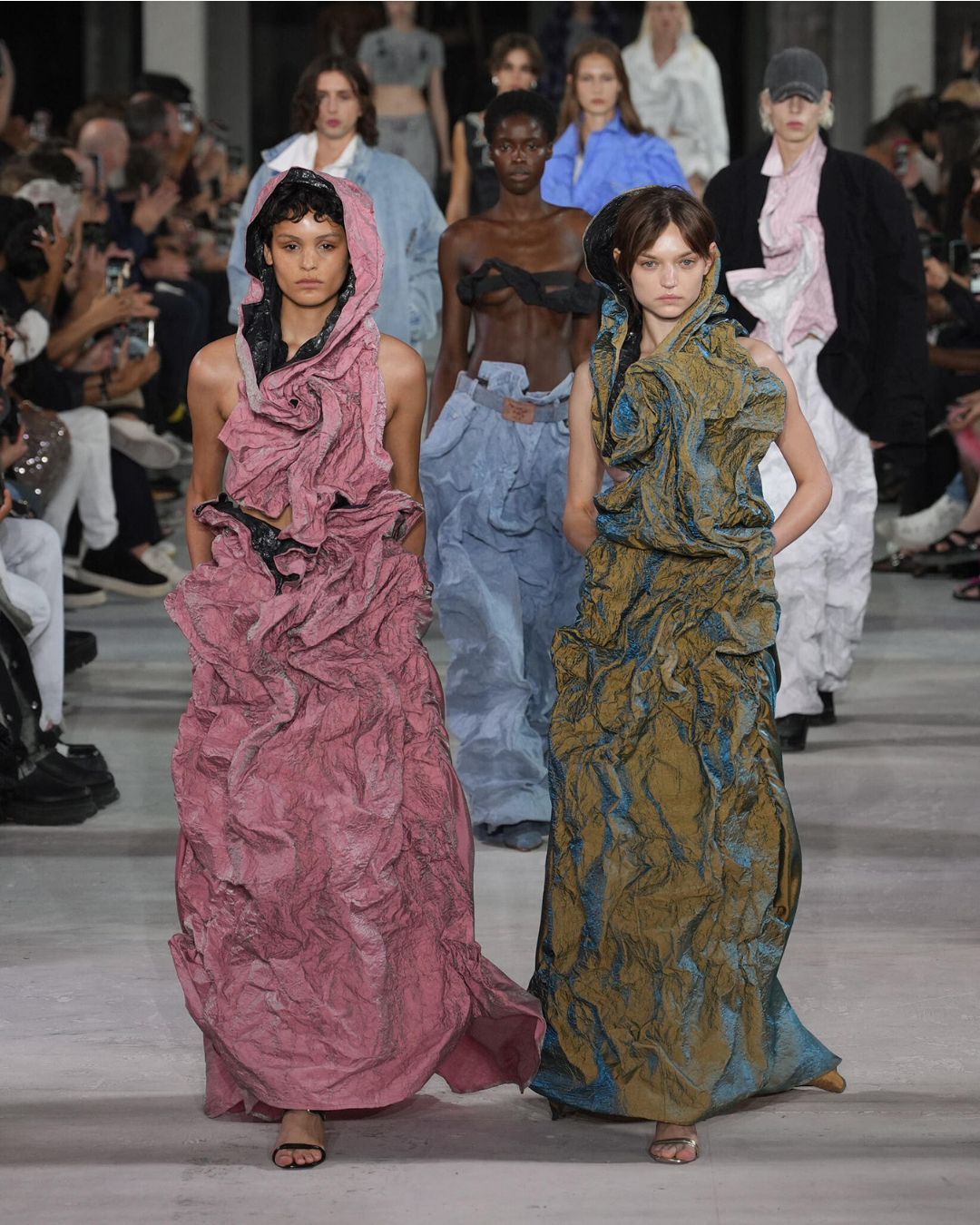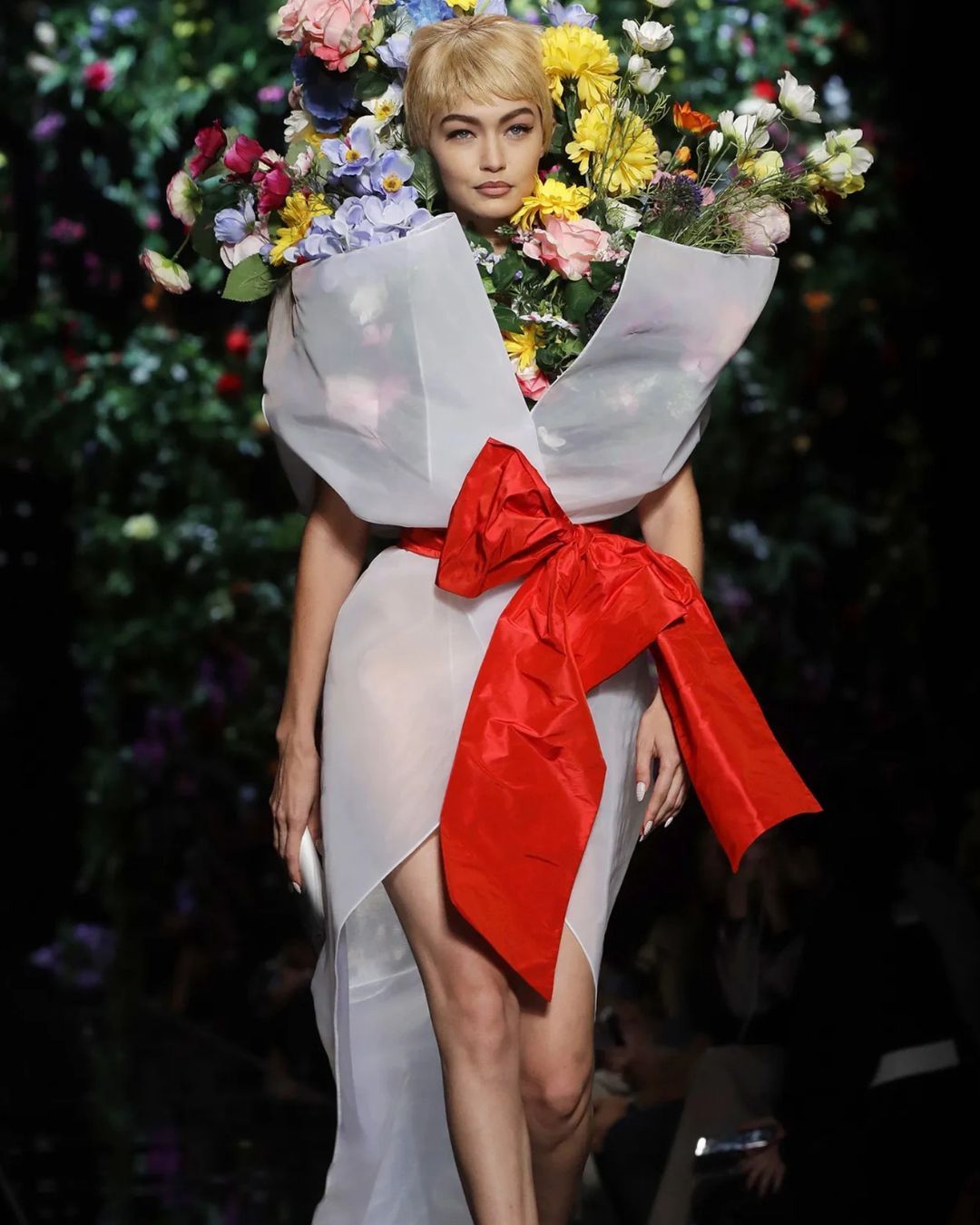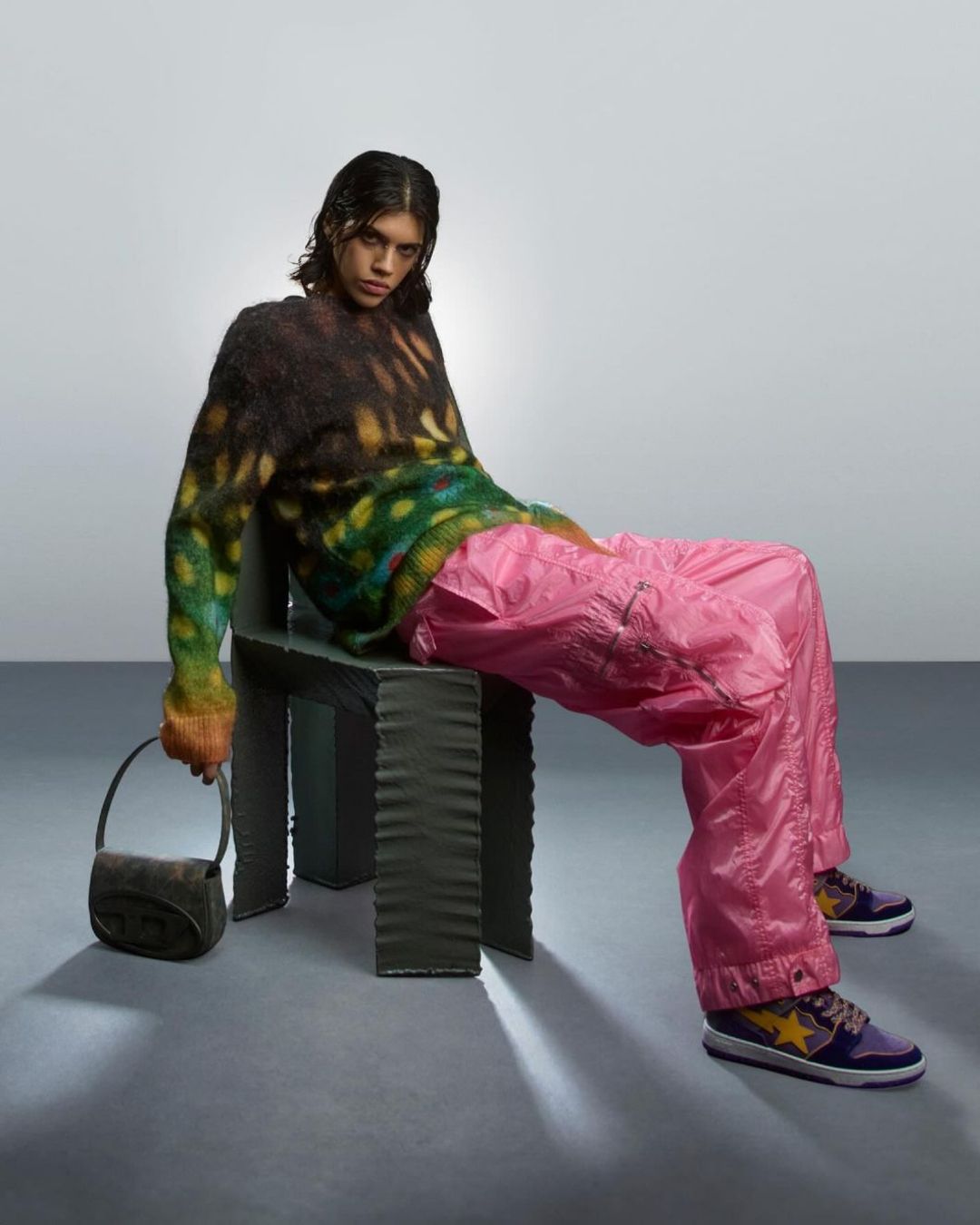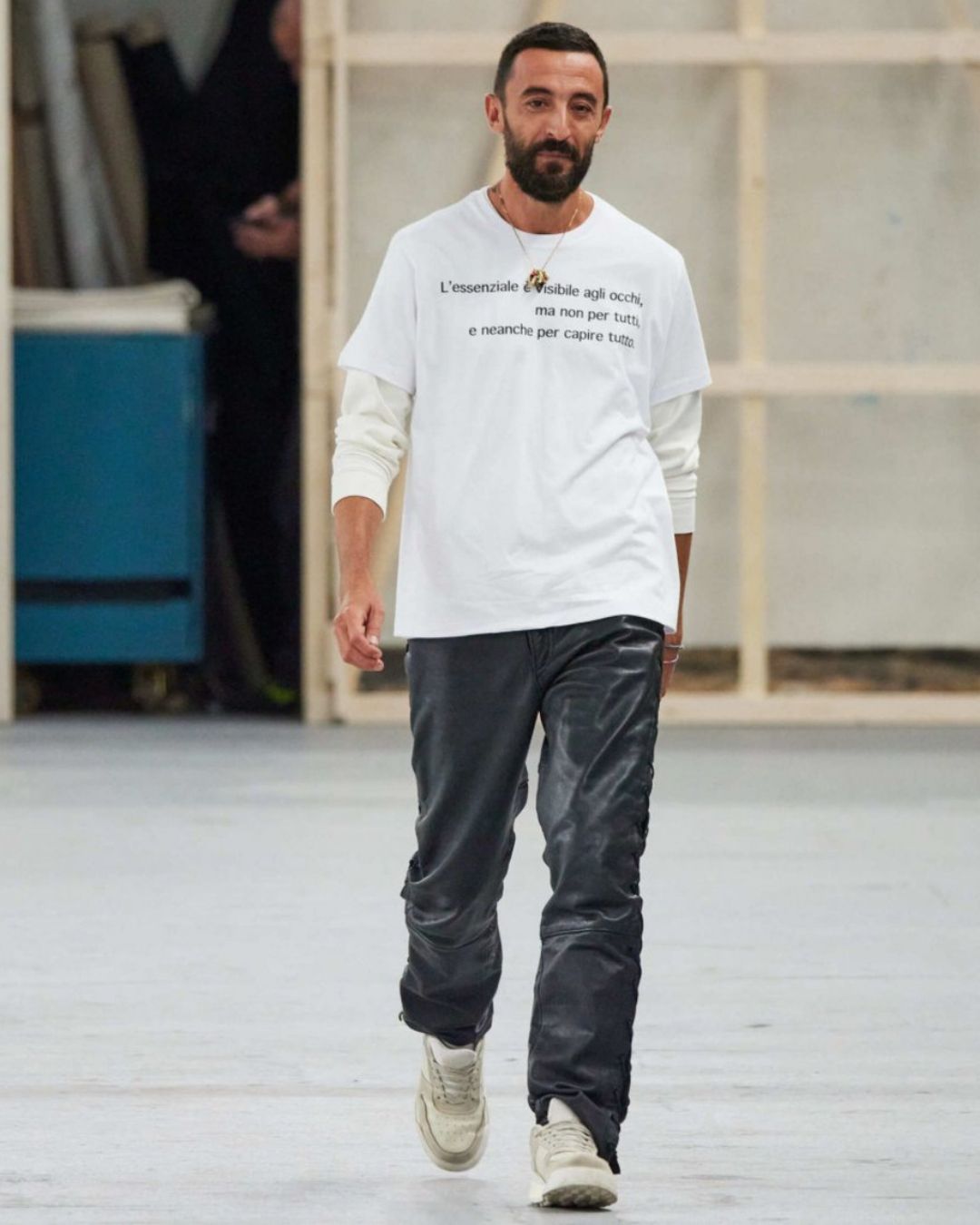
The reductionist aesthetic of Raf Simons' SS23 collection Minimalism, but with a twist
For his return to the catwalks after last February's FW22 digital show, Raf Simons chose London's famous Printworks club where the audience, left standing, watched as models plowed a very narrow catwalk to the ominous rhythm of pounding techno music. The catwalk, so cramped that in the finale the models' shoulders brushed against each other moving in opposite directions, seemed to be a metaphor for a collection that has dried and shrunk the brand's aesthetic to the point of improbability, eliminating its layered, studiously chaotic citationism and replacing it with a work of simplification whose final outcomes, on the clothes, became almost surreal. The theme of reduction was most overtly manifested in the way blazers and shirts were cut down, transforming into sleeveless, undershirts or tank tops with sharp hems - all elements of a hyper-thin layering that preferred to fit the body rather than covering it or changing its silhouette as, for example, the monumental sweaters and coats of past collections did. Elsewhere, tops decorated by the hand lettering of Belgian artist Philippe Vandenberg, the author of rough and tortured works that tell of the human condition with dry brutality, were like crude panels of cloth transformed into tops and long dresses with pure lines.
In this sea of minimalism and «tailoring as a machine for the body» and thus as an assemblage of functional parts that create their own aesthetic rather than seeking one, the only touch of eccentricity is entrusted to the increasingly stringent relationship between dress and body: elastic elements in skirts and knitwear hybridize more classic garments with a disturbing touch of modernity and alter their shapes in relation to the body that wears them. Elsewhere, classic, anonymous wool cardigans are transformed into almost childlike rompers that take the idea of reduction toward avant-garde evolutions. The most beautiful pieces, in addition to the aforementioned shirts that become tank tops, are the sack dresses constructed as very simple fabric constructions closed, around the thighs, by a strap and devoid of any seams or superfluous signals - bordering on primitivism. And other straps, those of wafer-thin belts, cinch classic blue shirts and T-shirts at the waist while the progressively resected layers of the looks reveal, underneath, tight-fitting jumpsuits in bright acid colors. Adjusting the shape the silhouette are only two elements: the actual garment, whether knit or dress, in its wide and unstructured forms and a single strap, with all its connotations and subtexts - everything else is body and drape. Paradoxically, in this collection, it is the clothes that seem naked, stripped of their immediate recognizability and abstracted in their alienating anatomy.
The insistent presence of leggings that replace pants in many instances recall a club culture daughter of that 2000s indie sleaze that, through Simons' alienating and nostalgic lens, further simplifies and minimizes looks. And while the combination of leggings and mesh tops recalls the party uniform of Y2K club culture, with the neon colors winking at the rave world; on the other, an anarchic sense of bon ton emerges in the overlap of shirt and wool sweater that, at the bottom hem, extends into a flap of wool reminiscent of an unfastened bodysuit - later, sleeveless sweaters appear to be worn inside out and backwards, with the Raf Simons label sitting just below the collar on the front. The collection, which opens with three skimpy, semi-transparent looks, then closes with the severity and dryness of gray wool coats and suits, beneath which, beyond the leggings, naked bodies can be perceived - these are the two sides of the radical simplicity sought by Simons: on the one hand, the anarchy of extreme reduction of clothes to second skin and color, on the other, the almost abstract dryness of a tradition beneath which a life can be felt pulsing.









































